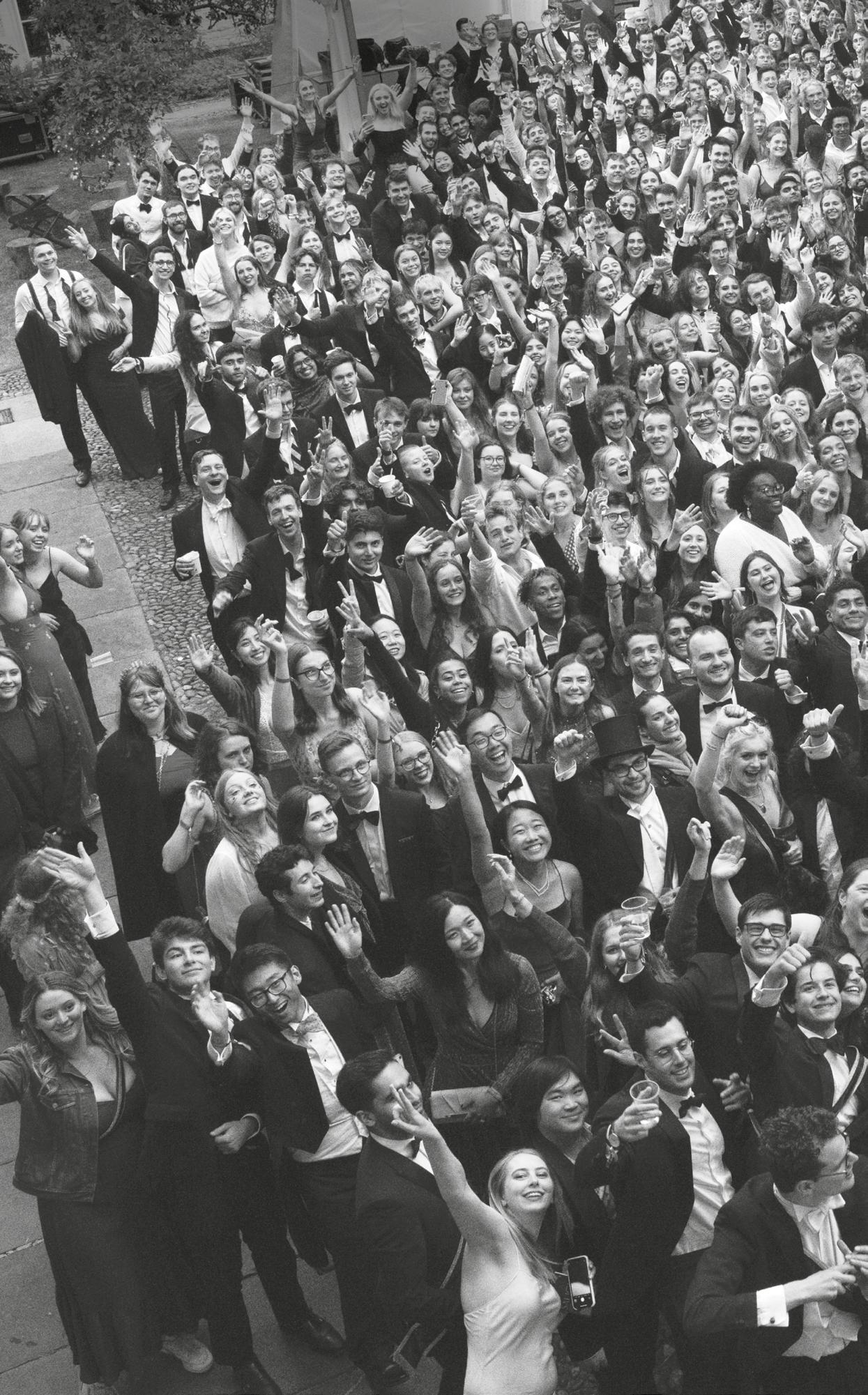

From the Master
Welcome to your latest edition of Once A Caian. We are very excited to share this issue with you, which is packed with a variety of articles, features and news.
Our theme for 2022 is “Reconnecting” – and this year, we are celebrating being able to reconnect after two years of Covid disruption, lockdowns and restrictions.
The past couple of years have been challenging for everyone, and at Caius we have prioritised the welfare of our students, Fellows and staff, as well as doing our best to keep everyone safe.
Now that the world has opened up again, we wanted to reconnect with you all – and being able to host in person events once again and reunite with Caians past and present has been an absolute pleasure. Our Annual Gatherings have proved very popular, and rain did not dampen people’s spirits during our May Week Party on June 18. We have also reached out to our global community, with visits to New York, San Francisco, and Singapore, and look forward to more international reunions in the coming year.
Our front cover demonstrates the pure joy students experienced in attending the first May Ball since 2019 –a part of the University of Cambridge experience for over 150 years. Inside you can read about the challenges and highlights of organising such a huge event in the wake of the pandemic.
We have spoken to a wide array of Caians about the pandemic – and how they have managed to keep in touch. You will find plenty of insights into how different parts of society have coped during the past couple of years, and how they are now reconnecting.
You can read about Peter English (Engineering 1973) and Chris Stoate’s (Modern & Medieval Languages 1973) chance encounter during their first week at Caius – and the heart-warming family history it unravelled.
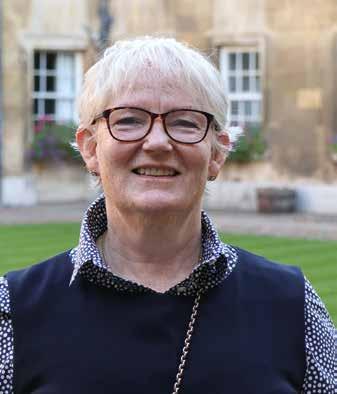
We speak to Chris Goater (Social & Political Sciences 1995), Head of Corporate Communications at the International Air Transport Association (IATA), about how the aviation industry is getting back off the ground.
Dr Quentin Stafford-Fraser (Computer Science 1986), who helped invent the world’s first webcam, discusses how
technology has not only kept us connected throughout the pandemic but revolutionised how people will work and socialise long-term.
You can take a walk on the wild side with neurologist and biodiversity champion Mark Millan (Natural Sciences 1975) or read an interview with the National Theatre’s John Langley (English 1970) to discover how the theatre is bouncing back post Covid restrictions.
Meanwhile, Wellbeing & Resilience Coach Lizzie Paish (Law 1986) talks about how she helps people to reconnect with their wellbeing to enable them to thrive, as well as coaching young people to deal with anxiety and mental health issues.
Dr John Hardwick (Physics 1969) delves into the fascinating world of astronomy – and discovers the Lunar Caians immortalised in the names of the moon’s craters.
Visitors to the College over the summer will have noticed the scaffolding enveloping the Gate of Virtue. You can find out more about its restoration in this magazine.
Caius Boat Club enjoyed a highly successful return of May Bumps for the first time since 2019, with M1 retaining Head of the River, and W2 and W3 claiming blades. Congratulations to all eight crews involved in the racing! In April, Caian Bronya Sykes (Natural Sciences (Biological) 2019), Women’s President of Cambridge University Boat Club, led the Light Blues to Boat Race victory over Oxford once again, setting a new Tideway course record.
Much of what the College is able to achieve is down to the generosity of our benefactors. In this edition we hear from Tiéphaine Thomason (History 2017), one of the first recipients of the Tammy Chen Postgraduate Studentship, who says she would have probably quit the University had it not been for the support she had received from Caius. Postgraduates are an integral part of our community and there is little government funding for them, so we really do appreciate your support. We also congratulate Dr Vedran Sulovsky, the first recipient of the Saunders Research Fellowship. I look forward to welcoming more of our Caius family back to the College in the coming year.
PROFESSOR PIPPA ROGERSON“Now that the world has opened up again, we wanted to reconnect with you all – and being able to host in person events once again and reunite with Caians past and present has been an absolute pleasure.”
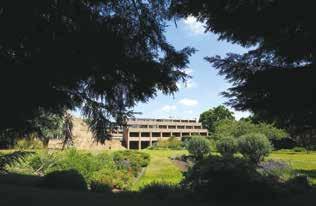
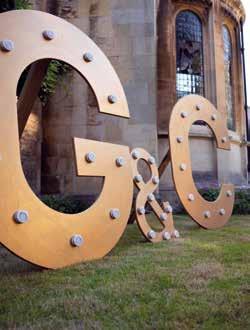

CHAMPION FENCER AWARDED MBE
Georgina Usher (Computer Science 1991) was awarded an MBE in the Queen’s Birthday Honours for services to fencing.

Georgina won 10 British titles and represented Great Britain at numerous World Championships in her athletic career before being appointed British Fencing chief executive in 2014.
She has fulfilled a variety of volunteer roles in fencing over the years from club to international level, including club coach, competition referee, British Fencing Board Director, Scottish Fencing Performance Director and FIE Safeguarding Officer. She is an elected director on the British Olympic Association Board. “I am truly delighted to receive this unexpected award”, Georgina said.
A CENTENARY OF PETER TRANCHELL
An ambitious programme is under way to celebrate a centenary since the birth of celebrated composer and former Precentor at Caius, Peter Tranchell (PAT).
Activities organised by the Peter Tranchell Foundation include a special commission from Proms composer and Caius alumna Cheryl Frances-Hoad (Music 1998) and a composition competition for organ.
A Centenary Musical Soirée and Reception at St Paul’s Knightsbridge on November 26 will feature performances by the Gonville and Caius College Chapel Choir and Consort, conducted by Precentor Matthew Martin, former organ scholar Francesca Massey (Music 2002) and other Caians.
Born on July 14, 1922, PAT attended King’s College, Cambridge, where he studied Classics and then Music.
After teaching for a year at Eastbourne College, PAT returned to Cambridge in 1950 as a lecturer at Fitzwilliam College, moved to Caius in 1960 and succeeded Patrick Hadley as Precentor in 1962.

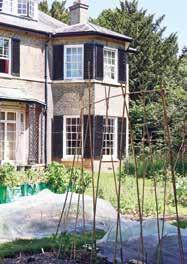
Caius received a Platinum Colleges award for the 2021–22 Green Impact year.
Green Impact is the University of Cambridge’s environmental accreditation scheme, aimed at making its departments and colleges more environmentally friendly.
Caius was awarded gold in 2020–21 in the College’s first participation in the scheme; now Caius has earned the top prize.
Read more at www.cai.cam. ac.uk/living-here/environment-andsustainability-caius
A Centenary Musical Soirée and Reception at St Paul’s Knightsbridge on November 26 will feature performances by the Gonville and Caius College Chapel Choir.
CRICKET CUPPERS REPLAYED AFTER CONTROVERSY
It’s just not cricket – but it was an exciting twist to Cricket Cuppers after Churchill College were found to have had an Oxford student on their team for the Caius fixture, resulting in a rematch.
Varsity reported that the first match had to be replayed on May 10 after one of the Churchill fielders was spotted wearing “Oxford stash”. Churchill won the match by one run, posting 152, with the Oxford student “easily their best player”, according to the Varsity report.
Match organisers confirmed that Oxford students are not permitted to participate in Cambridge Cuppers matches, so a rematch was held on May 14, with Caius winning this time with 17 balls to spare.
Fitzwilliam College won the Cricket Cuppers final on June 22 for the second year in a row.
SIX SCOOPS TWO TONYS
Caian Lucy Moss, half of the creative powerhouse behind international blockbuster SIX: The Musical, has described their brainchild winning two Tony Awards as “totally bananas”.
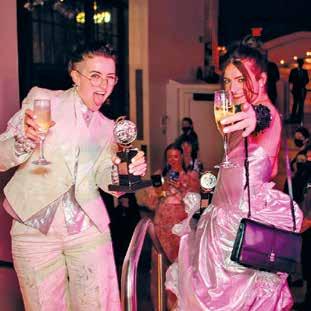
Lucy (History 2014) and co-creator Toby Marlow won Best Original Score during the 75th Tonys on June 12. The quirky musical also picked up the award for Best Costume Design.
The feminist show, re-imagining the story of Henry VIII’s wives, was penned while Lucy and Toby (Robinson, English 2014) were studying for their final exams at the University of Cambridge.
Lucy said: “It’s totally bananas to have won a literal Tony award for a show that started its writing process in my room in Gonville Court.
“I now feel vindicated in having spent more time at the ADC than writing my essays.”
SIX was first performed by the Cambridge University Musical Theatre Society at the Edinburgh Fringe in 2017, going on to open in the West End in 2019 and Broadway in 2021.
The show is coming to the Cambridge Arts Theatre in February 2023.
MAKING MATHS INCLUSIVE
Mathematician and musician
Dr Eugenia Cheng (Mathematics 1994) donated signed copies of her books to the College Library in June – her first visit to Cambridge in seven years.

Eugenia also met with Cambridge University Press about her latest book, The Joy of Abstraction, which aims to demystify abstract maths, address questions of social justice and bring category theory to a wide audience.
After spending the last three years “stuck in the US because of the pandemic”, the Scientist in Residence at the School of the Art Institute of Chicago longed to visit home.
“My actual childhood home isn’t in the family any more”, she said, “but Caius feels like a home that will always be there. And I really did feel very warmly welcomed by all the Fellows I saw, who seemed to take a genuine interest in what I’ve been doing.
“I had a long and helpful conversation with the mathematicians about inclusivity, which is something I never talked about when I was a student because I didn’t want to draw attention to the fact that I was different – I felt I should assimilate, and just prove myself in my work.”
To watch a video about Eugenia’s quest to make maths more accessible, see www.cai.cam.ac.uk/ news/alumna-eager-make-mathsmore-fun
Friends
Reunited
I
Enjoying a drink after a day on the slopes in Whistler, Canada, 1989. Peter (left) and Chris (third from left) are donning their Blues sweaters. They are pictured with Nick Jones and Peter Russell

A visit to Eastbourne, UK, 1986: from left, Courtney, Jean, Thea and Jimmy
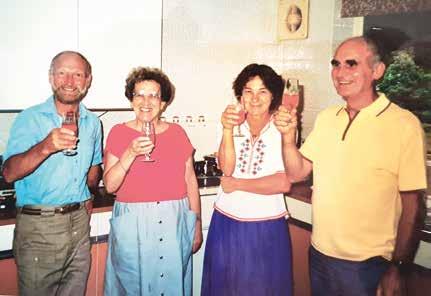
There was an instant click when two Freshers first met each other in Hall in 1973. Little did they realise that despite growing up an ocean apart, they shared a bond that went back a generation.
It’s a Thursday afternoon in May and Peter English (Engineering 1973) logs on to Zoom from his student digs at Swansea University, where at the age of 68, he’s studying for an MSc in Mathematics. Despite sitting an exam that morning and having another to revise for the following week, he appears cheerful and calm. A moment later, Chris Stoate (Modern & Medieval Languages 1973) joins us from Oakville in Ontario, Canada, where it’s 9.30am. The easy bond between the two men is palpable. The friends have remained close for almost half a century and reunited at an Annual Gathering in College the previous month. But the story runs much deeper…
Rewind to autumn 1973, when Peter and Chris embarked on their university journey. By chance they met in Hall a few days before term officially started. Chris was at Caius a few days early to take oral tests before starting his degree. Peter turned up due to “an initial burst of enthusiasm for no good reason”.
Canadian Chris and Somersetborn Peter instantly hit it off, a friendship that partly revolved around their “common affinity for the Late Night Bar” in St Michael’s Court.
When Chris returned home for Christmas that year, he mentioned his new friend to his father, Courtney.
Chris recalls: “My dad said, ‘oh English – that’s an interesting name. I had a good friend named Jimmy English growing up and we were good friends for a long time. I’m curious – is his mother named Thea? Is she German?’”
Chris had to wait until returning to Cambridge to confirm this unlikely coincidence. It transpired that the undergraduates were indeed the sons of two former best friends, who had lost touch decades before.
THE BRISTOL CONNECTION
Jimmy English and Courtney Stoate first met while attending Fairfield Grammar School in Bristol in the 1930s. Originally from Tyneside, the English family relocated to the south west after Jimmy’s father, a miner, was badly injured in a pit-related accident. Jimmy started at Fairfield aged 14, immediately standing out because of his northern accent.
Chris said: “My dad befriended him and they were very close.”
Peter added: “There were only three boys in their class at school and 20-odd girls. This is pre the 1944 Education Act. Very few poor kids went to grammar school in those days. My family were very poor with my grandfather not being able to work for quite some time after he was injured. It was only because they were scholarship boys that they got to grammar school.”
During the Second World War, Jimmy served in the Fleet Air Arm, a component of the Royal Navy, while Courtney fought with Bomber Command in the Royal Air Force. Afterwards they both studied at the University of Bristol – the first in their families to attend higher education. The friends spent one summer travelling around Europe on a motorbike.
In 1955 the Stoate family emigrated to Australia, when Chris was just two. Courtney taught in Perth for six years, before moving the family to Canada to progress his career.
Chris said: “They lost touch completely in probably ’55. They’d been close.”
In those days, most people did not have telephones and international calls were expensive. Flying was a luxury, and as “men don’t write letters”, the families lost contact.
FRIENDS REUNITED
Thanks to a chance encounter at Caius by Peter and Chris, their fathers picked up where they left off – after almost two decades.
Chris said: “When the chance came to reconnect, both of them leapt at it and they ended up spending a lot of time together till the ends of their lives.”
Jimmy and Courtney enjoyed working on a 1936 sailboat that Courtney owned in Chesapeake Bay in the United States and the men and their wives, Thea and Jean, often spent summers visiting each other.
Meanwhile, Chris and Peter have also stayed in touch and regularly see each other. Peter is godfather to Chris’s daughter, Hayley, who recently graduated from Columbia Law School.
Both alumni had been keen athletes at Caius – Peter played College rugby and was Captain of Boats, as well as earning a Cambridge University Athletics Club Full Blue for hammer throwing, while Chris played on the University ice hockey team, and achieved a Half Blue. Since graduating, they have spent many winters skiing and, until their late 50’s, they took part in running races, including the Cabot Trail Relay around Cape Breton Island in Nova Scotia and the Welsh Castles Relay.
After graduating Peter trained as a teacher before working in finance for an IT company. He lives in Denbighshire, Wales, and completed his MSc in September with Distinction (staying away from late night bars!).
Chris worked for Xerox and Bell & Howell for many years before leaving to start his own business in 1987. After 25 years he sold the business – to Xerox.
Throughout the pandemic the two friends kept in touch via Zoom, FaceTime and WhatsApp. They plan to meet frequently following the
L Courtney and Jimmy spent many happy summers sailing

You shall go to THE BALL



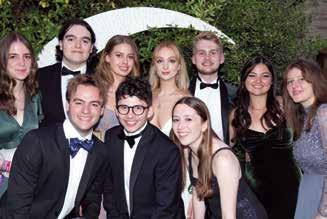
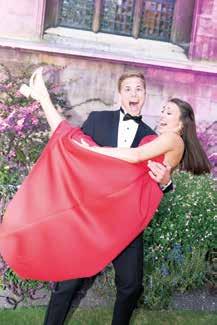
May Balls have taken place in Cambridge for more than 150 years and have become a part of the student experience. Following two years of Covid disruption, the Caius May Ball was back with a vengeance during the Summer Solstice, June 21. This year’s theme was Saligia – the Seven Deadly Sins – with guests promised “a journey from the Garden of Eden into a world of sinful indulgence and back to Paradise”.
We chatted with May Ball Committee Vice President Binu Perera (Medicine 2019) about the challenges and highlights of organising such a big event after two years of cancellations.
This was the first May Ball since 2019. What challenges did you face in putting it on?
Our main concern was the lack of May Ball experience – within our 19 person committee, only a handful had been to balls previously –so we were heavily reliant on advice from College and even our vendors.

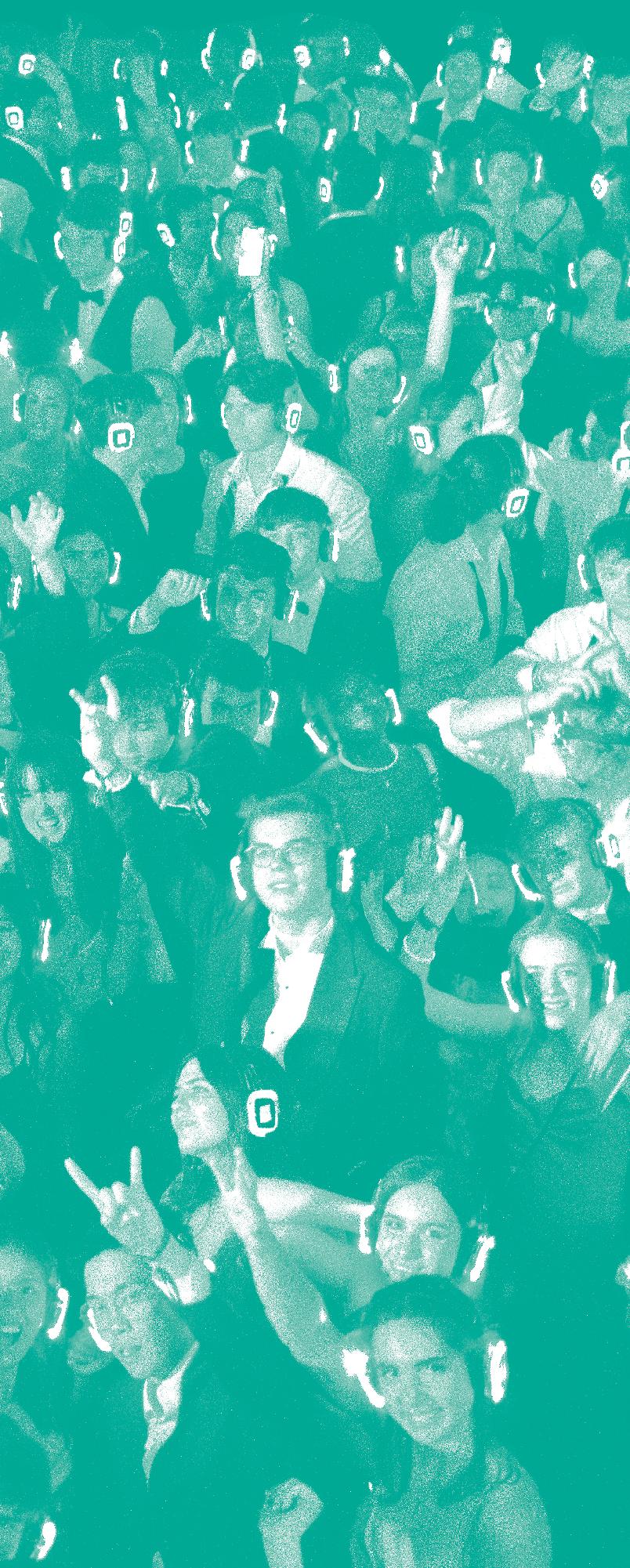



We also had the important role of reviving the tradition of the May Ball, which has suffered over the pandemic, as well as introducing the next generation of students to Cambridge May Week celebrations!
How
much planning
was involved?
We started planning for the ball in October 2021 with a 19 person committee. An event of this scale required a lot of work and there was a considerable investment
It
from everyone involved, with numerous committee meetings, meetings with College staff and meetings with vendors. We are especially thankful to College for their support. Planning continued throughout exam term, with everyone balancing their degrees and planning for the ball throughout Easter.
How did it go?
The ball was an absolute success from the get go! We sold out all of our tickets on the day of ticket release – a good indicator of the excitement for the ball. Student reviews for the ball itself have been fantastic and it seems that we have done a good job at reinstating the Caius May Ball as one of the best in Cambridge!
How did you come up with the theme?
We wanted to choose a theme that was clear and which let us make effective use of the College’s beautiful spaces. The Seven Deadly Sins allowed us to do this with Tree Court lavishly dressed up as Paradise, the Fellows Dining Room loaded with gluttonous platters, and the Master’s Garden decorated with soft lighting and calm music for our guests to wallow in Sloth.
Caius May Ball as one of the best in Cambridge!

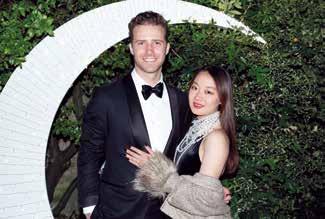



seems that we have done a good job at reinstating the
Beyond the various stages offering a variety of music there was a wealth of food available from steak frites to chicken skewer roulette. Guests could also challenge their friends at our casino, arcade or the bucking bronco – a spectacle for non-participants to watch. On top of all of this there were multiple exciting performers around the site, including a sword swallower, a belly dancer, stilt walkers and a snake charmer!
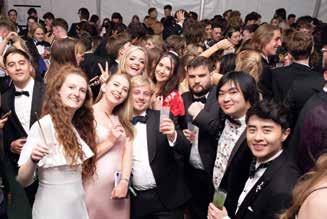
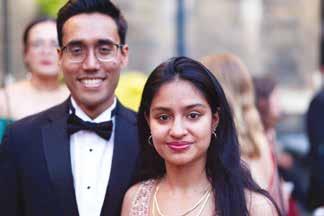

It’s



Q
Q A A
What forbidden delights awaited ball-goers?
Would you do it again?
been a fantastic
There were multiple exciting performers around the site, including a sword swallower, a belly dancer, stilt walkers and a snake charmer!
R econn e c tingwi t h y niruo n e r caep e
TALI ISERLESAs an undergraduate Lizzie Paish (Law 1986) suffered from impostor syndrome. At the time she thought she was the only one feeling this way. Even at alumni events, surrounded by hugely successful professionals in high-powered positions, she continued to have feelings of inadequacy.
Lizzie says: “All my contemporaries are consultant doctors, professors, High Court judges – and I was the primary school teacher. I was in leadership positions but that didn’t look enough to me.”
But what Lizzie learned while retraining to become a Wellbeing & Resilience Coach changed her perspective: inner peace and ‘wellbeing’ – that ability to tap into your inbuilt resilience and thrive – does not depend on external factors. With less worrying about keeping up with the Joneses, social validation or trying to conform to preconceived notions of success, life became a whole lot simpler.
Lizzie says: “Now I see that I really was not alone. I’ve got two clients at the moment who are Cambridge alumni. They are in really high powered jobs and yet are still saying ‘I’m not sure I’m doing as well as I should’. My experience of coaching has revealed that enormous numbers of people are telling themselves these stories of not being good enough. As long as you’re saying ‘I’ll be happy when...’ you can never be happy – because you’re always waiting for something. Happiness and peace of mind are right here when we stop thinking they’re somewhere else. I help my clients to see that for themselves.”

Everyone has ‘wellbeing’ hardwired into them and once they figure out how to tap into it, they can cope with most experiences life throws at them, Lizzie says.
“Your security, your peace of mind, your resilience –they are your factory setting. You might have totally lost sight of them but they are there. I’ve seen wonderful things happen when people just catch sight of that for themselves. When they realise they are already enough.”
Lizzie Paish (Law 1986) felt stuck in a rut when she ditched her teaching career to retrain as a Wellbeing & Resilience Coach. She now helps others reconnect with their wellbeing to enable them to thrive, whatever their situation, as well as coaching young people to deal with anxiety and mental health issues.
An epidemic of mental health problems
Originally from Dorset and now based in Derbyshire, Lizzie provides resilience coaching for senior leaders and young people struggling with difficult circumstances, lack of confidence or anxiety, mainly through online coaching.
There was already an escalation in mental health problems before the pandemic but the crisis has deepened, she says.
However, she has issues with the underlying narrative that she says exists regarding mental health in young people and the pandemic.
“One of the things I find really unhelpful is, ‘oh, you were one of the Covid generation, you never got to sit your GCSEs’ or ‘you had homeschooling when you were nine, 10, 11 and it’s going to permanently disadvantage you’. It’s not to say those things weren’t very challenging and didn’t academically set back children. For sure that happened. But the narrative of ‘therefore you’re damaged and it’s going to be a real struggle to get back on track if you ever can’ is not true. And by telling young people that we’re doing them a massive disservice.”
Instead Lizzie wants young people to understand that they are innately resilient and able to bounce back from anything.
“It’s an unfashionable narrative because it sounds like it’s denying people’s difficult experiences, people’s trauma, and really awful things that happen to people. By saying ‘you’re resilient and you’re okay despite that’, I’m not saying ‘oh get over it’. Not at all. I’m saying ‘You are still whole. You have what you need to thrive in life, whatever has happened to you’.”
If people believe they are broken and can never recover, it can create a self-fulfilling prophecy, she warns. Conversely, she has seen dramatic transformations the moment young people recognise their built-in wellbeing.
How parents can help
The best way for parents to support their kids through difficult times is to stay calm and look for the “wellbeing in their child rather than the brokenness”, Lizzie says.
“As parents, of course we want everything to go well for our children but then when it starts to not go well often people get anxious. And when parents get anxious they create a cycle of anxiety. Children pick up on their parents’ anxiety – ‘oh there must really be something wrong because now Mum and Dad are worried about it’. So we get into a downward spiral.”
With a clear mind, parents are better equipped to figure out how to help their child, Lizzie adds. She advises parents to look for positives in their children’s lives rather than dwell on negatives.
“I’ve got a client whose daughter is struggling with a mental health issue. That’s basically all they ever talk about. It’s become a big issue. But if that’s all you ever talk about it’s not surprising it becomes a bigger and bigger issue. We need to shift the focus elsewhere.”
‘The rich, fertile ground of something new’ After graduating from the University of Cambridge and some time teaching abroad, Lizzie went on to get a Postgraduate Certificate in Education (PGCE) at Kingston University before becoming a primary school teacher in 1995. She found herself becoming frustrated with increasing bureaucracy after over two decades in the profession.
Lizzie says: “I think there are a lot of people like me, who at mid-life are ready for a new challenge, or a new perspective on life. Often they don’t know where to look for support.”
For many people, the unknown looks scary and change seems impossible, but Lizzie describes it as “the rich, fertile ground of something new”.
Rather than instruct clients on which path to take, Lizzie helps them tap into their own wisdom to figure out new possibilities.
“It’s like taking the blinkers off… When people connect back with who they really are, it’s like reshuffling the entire deck of cards. Everything starts to play out differently.”
Peace of mind
As a society we’re conditioned to crave praise – but learning not to require external validation or feeling the need to impress is incredibly liberating, Lizzie says.
“One of my clients is a senior manager of an NHS hospital and she talks about how the senior medical staff show off how ‘I haven’t had lunch today because I’m working so hard’, or ‘I haven’t even had a drink or popped into the loo’. It’s like a badge of honour.”
This sort of behaviour is based on the preconception that you need the approval of others to feel accepted and valued, Lizzie adds. “That’s simply not true.”
This is also why young people feel such pressure. It can look as if their whole identity is at stake as they approach tests and exams.
“Think how much more attention you can give to revising for your exams if you’re not obsessed with: ‘if I fail this exam and don’t get into this university, my whole career’s ruined’. When my daughter was doing her finals, within one minute she’d gone from ‘I think I made a mistake in my final essay’ to ‘I’m never going to fulfill my potential’. That’s what we can do with our thinking. Teaching young people that there is nothing they need to achieve to be okay can change everything.”
Peace of mind comes from within – and once you stop looking for wellbeing from external sources, it opens up a world of opportunity, Lizzie says.
“It sounds so simple but it’s life changing. If you think your peace of mind depends on things outside of you then there’s an awful lot of the world to manage so you can experience wellbeing. When you don’t have to do that you can focus on what really makes sense, what you really love, what you’re inspired to do in the world. That’s how we reach our full potential and learn to thrive.”
Lizzie can be contacted at lizzie@lizziepaish.com and www.lizziepaish.com.
“Your security, your peace of mind, your resilience – they are your factory setting. Wonderful things happen when people just catch sight of that.”
“When people connect back with who they really are, it’s like reshuffling the entire deck of cards. Everything starts to play out differently.”
Reconnecting via TECHNOLOGY
TALI ISERLESDr Quentin Stafford-Fraser (Computer Science 1986) says hybrid and remote working are positives that have come out of lockdowns and Covid restrictions, largely thanks to a combination of fast broadband and networking apps like Zoom and Teams.

Quentin, who runs Cambridge IT consultancy group Telemarq, adds: “I’m biased because I’ve never really liked commutes and I’ve never liked big, open plan offices and I’ve never liked the stress and the unnecessary time consumption that goes with commuting. And of course there’s the environmental impact.”
Working from home is the new normal for many, although it doesn’t work for everybody.
“I do know people who’ve moved house away from where they used to work on the assumption that they are now going to be able to work remotely and I think in general for a lot of people that will happen… Most of us had never heard of Zoom two-and-a-half years ago. Had the pandemic happened 10 years earlier it would’ve been a very different story.”
BACK TO THE BEGINNING
In 1989 computers were in their infancy. In between doing his Computer Science & Engineering degree and Computer Science PhD at Caius, Quentin went on to become its first Computer Officer – perhaps the first working full-time at a Cambridge college.
“Caius was fairly forward-thinking because once the IBM PC came out in the early 80s, Caius had a policy that any Fellow who wanted one could have one. Some of the other colleges would have two PCs in a small room that Fellows could use. Caius had probably nearly 100 PCs. There were rooms of PCs for students.”
Quentin recalls “a certain Pippa Rogerson” (now Master of the College) coming in to print out her PhD thesis.
Because none of the PCs were networked, he would often be found in a Fellow’s room with a screwdriver, taking a computer apart, or carrying it into his office in St Michael’s Court.
“I remember the expression on one Fellow’s face when I pointed out it could do indexing, and renumber his footnotes. He was overwhelmed by the amount of time saved by this one small feature.”
BEAN ME UP, SCOTTY!
It was while working as a research assistant at the University of Cambridge Computer Laboratory that Quentin and colleague Paul Jardetzky inadvertently created the world’s first webcam in 1993.
Not wishing to subject their department to stale coffee, the computer scientists pointed a camera at the coffee pot and wrote a program allowing its image to be displayed on a workstation screen, so that they could tell when it was freshly brewed. The Trojan Room Coffee Pot started trending, beamed around the world in all its grayscale, pixelated glory.
Within three years, it had received its millionth view, got a mention on The Archers, and was declared the biggest tourist attraction in East Anglia.
Quentin says: “It’s hard to capture now why the idea of viewing a live image over the web would be so interesting, but we have to remember that back then people almost never saw live images from somewhere else. The only reason you would see that is if a big broadcasting company decided that this was Wimbledon and worth sending a team of experts with very heavy cameras and antennas. Ours wasn’t a very exciting live image, but it gave you the ability to go and look at another part of the world and see what was happening there right now. It didn’t exist before.”
Quentin recalls “a certain Pippa Rogerson” (now Master of the College) coming in to print out her PhD thesis.
Technology has kept people connected throughout the pandemic and revolutionised how people will work and socialise long-term, says the man who helped invent the world’s first webcam.A STARTER FOR 10
One of Quentin’s more surreal experiences was appearing in the Christmas 2013 University Challenge Gonville & Caius alumni team, alongside Antiques Roadshow expert Lars Tharp, historian Helen Castor and former Controller of Radio 4 and Master of St Peter’s College, Oxford, Mark Damazer.

The team played against Christ Church, Oxford, in the first round, Lancaster University in the semi-final, and to their amazement, beat Emmanuel College, Cambridge in the finals to win the tournament.
The technology entrepreneur says it was “a phenomenally fun experience”, adding that he and his teammates had become good friends.
“If you all survive Jeremy Paxman together, it sorts of binds you together, even though we barely knew each other beforehand!”
The notoriously sharp-tongued host was “much kinder to old folk” than to undergraduates, Quentin says. “As we were waiting backstage to go to those scary places where you sit and get grilled by Paxman, we were saying ‘we ought to have a team chant or a song or a haka’ and we realised we could all remember the Caius Latin grace – so we were chanting the Latin grace from Hall to raise our University Challenge!”

Quentin’s time at Caius spanned a decade. Student highlights include devising intercoms connected with wires to communicate with six friends, long before the days of mobile phones.
“We ran these wires over the roof of St Michael’s Court and across the road over the Porters’ Lodge to get to Tree Court. We had this chain where if everybody was in their rooms we could pass messages from one person to another. This was quite fun and did require us to do some slightly illegal climbing on the roofs of College buildings to get some of these wires into place. Michael Prichard, who was Senior Tutor at the time, got in contact with me and I thought we were going to be made to take it down but no, he said, ‘could you just raise it up a little bit, we’re worried that the double decker buses might hit it’!”
In addition to possibly creating the world’s first 10-set Venn Diagram while at Caius,
CHALLENGEQuentin also met his future wife, Rose, a student at St Catharine’s, through mutual friends.
“We are about as far apart on the academic interest spectrum as you can get because I do Computer Science and she does Roman Law, British Constitutional History, Political History. I think the College system is very good at bringing together people from very different disciplines – and sometimes that ends in love.”
The couple married at Caius Chapel and have been together for over 30 years.
‘NEXT PATIENT PLEASE’
Quentin’s company, Telemarq, is responsible for public information screens used by doctors’ surgeries and vets.
“About a third of the GPs in the UK have our screens in their waiting rooms. The system ties into the patient information system so when the doctor says ‘next patient please’ it pauses the video about flu jabs and goes ‘bing bong, will Mr Smith please go to room five’.”
For the best part of a decade, Quentin has been working on various research projects at the University of Cambridge Computer Laboratory. One project, funded by Jaguar Land Rover, looked at “natural” navigation to improve drivers’ experiences and road safety.
Quentin says: “If you program your car to take you to Gonville & Caius it will say ‘turn left in 100 metres’ and you don’t know how far 100 metres is. Is that this turn or the next turn? So you’re constantly having to look down at the little screen to work out which turn you’re taking. That takes your eyes off the road, and it’s very different from the experience you’d have if someone was sitting next to you in the car, because they’d say ‘turn left just after the pub where the yellow car is going’. We were looking at whether computers could give directions in the same way.”
Computer Science is often perceived as dry –but Quentin says the reality is quite the opposite.
“I’ve always thought that computing is arguably one of the most creative subjects. Back in the early days programming a computer involved taking raw ideas and concepts and turning them into a tool that could solve a problem or entertain you, usually using no other raw materials at all. I always asserted that this was a terribly, terribly creative process but the only people who could appreciate that a lot of the time were the same people in that same nerdy group. Nowadays, of course, it’s much less of a niche topic and many more people do it, and also experience the results of computing.”
Quentin was part of the victorious Gonville & Caius alumni team in 2013The technology entrepreneur sums up his ordeal as “a phenomenally fun experience”, adding that he and his teammates had become good friends.
AND BBC IPLAYER
A Walk on the Wild Side
L Ox-eye daisies attract variety of insects; pictured here the soldier beetle

It didn’t exactly start as a lockdown project – but it was while Mark Millan (Natural Sciences 1975) was isolating in 2020 that he first embarked on an ambitious labour of love: cataloguing bugs in his “large, diverse and wild” garden in a leafy Parisian suburb.
“I was spending a lot of time at home, and my daughters and my wife had finally achieved their long-term goal of imposing an (albeit antediluvian, version 5) iPhone on me which I had kept refusing. Those things collided in a fruitful manner and have continued ever since.”
There had been reports of drastic declines in insect populations due to habitat loss, insecticides, pollution, invasive species and climate change, prompting Mark to question: would a wilder garden boost biodiversity?
The secret garden
A keen photographer – also equipped with a fancy SLR camera and paraphernalia – Mark set about cataloguing minibeasts in his garden. He has observed around 500 species of insect and spider, with their identification assisted by experts in France, Germany and the UK, including Ed Turner, William Foster and Matt Wilkinson, of the Department of Zoology, where Mark did his Part II. Mark also interacts with Buglife UK and French nature associations in realising this project.
Mark has allowed his garden to “rewild itself”. He let selected trees and bushes take root, expanded flower beds with insect-friendly varieties and left unidentified seedlings and so-called “weeds” to flourish. This has resulted in serendipitous surprises such as early purple orchids, broad-leaved hellebores and a rich suite of other insect-attractive flowers.
“Gardening should include respect for what we call ‘weeds’ (a concept poorly understood by nature!) which are actually wildflowers. Over hundreds of millions of years, birds, bats, insects and so forth have mainly co-evolved with what’s available in nature.”
Preservation and rewilding
A committed advocate of both protection (preventative) and rewilding (restorative) strategies, Mark says that there are several simple steps people can take to improve biodiversity at home.
He supports initiatives such as “No Mow May” but prefers minimal mowing and leaving areas of lawn to go wild throughout the year. “Islands” of wilderness in lawns and elsewhere can go a long way in boosting biodiversity, he says.

A leading neuroscientist is encouraging people to reconnect with nature to protect biodiversity and promote optimal mental health.
Moreover, Mark Millan (Natural Sciences 1975) has compared the disruption of complex networks in the brain that results in neuropsychiatric disorders to the effects of environmental damage on natural habitats.
“You can also plant things which are insect friendly. Butterfly-beloved buddleia is a classic, and other brilliant bushes are pyracantha and mallow, not to mention honey-suckle. Sage is a good thing to plant –it’s water resistant too. Hellebores, crocuses and grape-hyacinths are great as nutrition for precocious bees in early spring. The only basic ‘rules’ are a variety of flowers, something blooming all year long, and don’t keep changing since the bugs will be back next year, same time, same place!”
As for those weeds, ragwort is great so long as you “don’t have horses or sheep in your garden”! His ox-eye daisies attract up to 100 species of insects alone, and late-breaking golden rod another 40 or so.
One thing that angers Mark is the sight –and “horrendous sound” – of leaf blowers being used to collect leaves into plastic bags.
“What they’re doing is cleaning away all the organic material which should be going back into soil and all the insects are trapped in it.”
Mark prefers an occasional sweep-up, with leaves going into mulch or compost. He also recommends piling logs, bark and leaves to create a shady, moist corner for bugs. This also encourages hedgehogs, which have declined by 75% in the UK over recent years.
Refraining from using insecticides and pesticides is a no-brainer for encouraging
wildlife. Serious insect infestations, often by invasive species like the box tree moth, can occur, yet there are rarely enough bugs in a garden these days to do major damage, and nature usually sorts itself out if left in peace, Mark says.
“If you have ladybirds and lacewings they’ll deal with your aphids. Aphids are a nuisance, but they won’t kill a rose so it’s an overblown problem anyway.”
Renowned for immaculate lawns and manicured gardens, Oxbridge colleges are increasingly rewilding parts of their grounds. For several years areas of wildflower meadow have been cultivated at Harvey Court.

“I think it’s a really important signal. It’s great to see that Harvey Court, where I spent a lot of time revising (and ahem, playing frisbee), now has several areas devoted to meadows and wildlife.”
Even people living in densely populated, inner-city flats or houses with tiny gardens can encourage biodiversity.
“My sister has a miniscule garden in London but it’s fantastic. She plants sunflowers, marigolds, lavender, aromatics, poppies – and has loads of bees.”
You can grow insect-friendly flowers on balconies, plant wildflowers around blocks of flats, and liaise with local authorities to sow seeds in churchyards and parks.

“It’s great to see that Harvey Court, where I spent a lot of time revising (and ahem, playing frisbee), now has several areas devoted to meadows and wildlife.”
Mental health and nature
All this is less removed from Mark’s work on the brain than one may think.
After leaving Cambridge, he carried out research on pain, stress and endorphins at the Max Planck Institute for Psychiatry in Munich where he won several awards. Thereafter, at the Institute de Recherche Servier in Paris, he focused on the prevention and treatment of psychiatric and neurological disorders, publishing nearly 50 patents and more than 400 papers, receiving the Ariens Prize in 2014 for his “lifetime contribution to psychopharmacology research and drug discovery”.
Green spaces are beneficial to mental health; conversely, disengagement from nature is a risk factor for poor mental wellbeing. Indeed, an urban upbringing is associated with a higher incidence of problems like drug abuse, depression and schizophrenia, Mark says.
Though it cannot cure serious brain disorders, reconnecting with nature can be helpful in warding them off. “They used to do it in the past – they sent people to the seaside or to a forest. So, there’s nothing particularly radical about this type of thing.”
Mark would like to see more initiatives for encouraging children to interact with nature, both informally and integrated into the National Curriculum. One example gaining momentum is forest schools, which encourage non-structured outdoor education for primaryage children. This engenders numerous skills together with a respect for the environment.
Complex networks: nervous systems and ecosystems
Mark has drawn parallels between mental health disorders and the disruption of ecosystems.
“If various classes of neuron in the brain get damaged, complex networks collapse, which is what happens in Alzheimer’s Disease or schizophrenia. A similar thing can happen in the garden leading to fragmentation if you lose, for example, hedgehogs or pollinating insects like bees and beetles.”
To illustrate this notion, Mark frequently compares the brain to coral reefs. Both are complex networks organised and operating in similar ways; they are inherently stable yet vulnerable to multiple and sustained stressors.
“When links are disrupted, they transit to a pathological state. That might be neurotoxic proteins causing neuronal anomalies and dementia on the one hand, or the loss of coral polyps due to bleaching and the collapse of a coral reef on the other. It’s fundamentally the same thing from a network perspective.” Moreover, climate change and environmental destruction are common threats to brains and corals alike, Mark says.
Social networks, Covid and mental health
Social relationships were disrupted by the Covid pandemic, leading to a deterioration of mental health. Interestingly though, Mark says, while some people suffered from lack of access to green spaces, others may have had more time to explore their green surroundings.
“They might have been less connected with each other but were more connected with nature, which helped compensate.”
Mark is involved in the Collaborative Outcomes study on Health and Functioning during Infection Times (COH-FIT), an international survey supported by the European College of Neuropsychopharmacology (where he has played a leading role over many years). It aims to determine how Covid impacted the physical and mental health of people, to identify those at greatest risk, and to develop strategies for dealing with future pandemics. Methods are published and initial findings are due out shortly, but responses are still being analysed, so those who wish to participate still can.
Prevention is better than cure when it comes to the brain and mental health, as well as the environment and the planet, Mark says.
“Today what people are looking for in Neuropsychiatry and more generally in the social and ecological world is to be preventative, because it’s like Humpty Dumpty – putting him back together again or un-baking a cake – it’s tough, you can’t really do it.”
On the plus side, there have been recent advances in substituting for faulty genes in young patients with brain diseases, and progress in rewilding and restoring natural ecosystems like coral reefs and forests.
“We can do a lot to help nature reconnect with itself - and, moreover, to reconnect with nature ourselves!”

“We can do a lot to help nature reconnect with itself – and, moreover, to reconnect with nature ourselves!”
the show must go on
TALI ISERLESThe past few years have been particularly tough on the arts, with theatres, cinemas and galleries forced to close or operate under special measures. The National Theatre’s Director of External Relationships and Partnerships, John Langley (English 1970), discusses how the theatre has kept going in different forms –despite challenges posed by Covid-19.

Even when audiences were permitted to return to theatres in early 2022, the challenges posed by the Covid pandemic remained. The Omicron variant closed the theatre restaurant, and a show with three people for one part had to be taken off when they each in turn fell ill. Now John Langley (English 1970), says the show must go on.
Covid is still a major consideration, with actors and stage crew separated as much as possible from the rest of the theatre to minimise the threat of infection.
John Langley says: “We got to a point before last Christmas where we had three people carrying one role. The lead went down, the understudy went down, the third person was going to come on with the script –and then she got it. That was it, we had to take (the show) off for eight or 10 days.”
The National Theatre (NT) is fortunate to be far more resilient to Covid disruption than smaller venues. Having three theatres hosting different shows means that if one is pulled, others can continue. NT Live broadcasts go out worldwide, and are particularly popular in the United States, generating income even when regular productions are disrupted.
During closure the theatre received generous donations from audiences and supporters, particularly connected to the free National Theatre at Home streams on YouTube every Thursday. In December 2020 the NT also received a £19.7million loan as part of the UK Government’s Culture Recovery Fund.
John says: “We’re doing straight runs, which is another factor in terms of Covid resilience. You don’t have people going back into their community and doing something else for the next few days.”
By mid-2022, the NT had seen audience capacities of around 80%, comparable with pre-pandemic levels, and a revival of Small Island sold out.
John says: “One of the perverse benefits of the pandemic was that there were a number of shows that had been rehearsed and cast and then we went into lockdown; they basically went into storage.”
Once restrictions were lifted, the NT consequently had a “ready-made production” for each of its theatres, he adds.
While some people are still anxious about travelling into and across London, particularly on crowded tubes, the NT is getting “plenty of people compared to the audiences we got coming out of lockdown”, John says.
photographer successfully sued the promoters of Smirnoff vodka for using his image, taken in 1960, in their advertising campaign.
Getting the balance right
Because the NT has three theatres, it is able to put on experimental, riskier shows as well as larger, commercially viable productions.
The Olivier Theatre, named after the NT’s first artistic director, Laurence Olivier, is the main auditorium, hosting an audience of 1150, while the Lyttelton Theatre has seating for 890. The Dorfman has an audience capacity of 450.
Michael Sheen starred in Dylan Thomas’s Under Milk Wood at the Olivier Theatre when the NT reopened after lockdown in June 2021. The show ran socially distanced for its full run, at a third of its normal capacity.
Putting on a big production after lockdown was “very challenging” but the punt paid off.
John says: “I think the presumption there was that younger people were more likely to be going out than older people having to get cabs or public transport, that it was probably better to try something and that if it failed, we try something else.”
Straight Line Crazy, running in cinemas throughout the country via NT Live, featured Ralph Fiennes in David Hare’s blazing account of Robert Moses, a master manipulator whose legacy changed New York forever.
John says: “Ralph Fiennes can’t do any harm at all, he brings sell out audiences.”
John recalls: “He went to the High Court in the morning, we did an opening in the evening and then he invited me with his group to a basement in Notting Hill where we would be still if someone hadn’t dragged me out at some point!”
John also enjoyed working with British theatre director Jonathan Miller, whom he described as a “man of immense prestige and immense intelligence… We had lots of people dotted around having a coffee and he gave me a one man show”.
There’s no business like show business
John fell into a life-long career at the NT through a series of coincidences. After graduating from Caius in 1973, he went on to do a Masters in English at the College of William and Mary in Virginia, USA. On his return to Britain, he knew he wanted to work in the arts but did not have a clear career path.
A keen cricketer, John set up a National Theatre team, which played on the nearby green.
“I suddenly got to know all the actors. We had a lot of fun over about 30 years. I got to hear about all the productions.”
The second bit of luck came when Michael Kustow, the ex-Director of the Institute for Contemporary Arts, was hired for the NT. John became his “wrangler” while Kustow was installing an exhibition and also put him in touch with cricket friends who had opened up a poster shop specialising in “serious art” in Chalk Farm Road. The rest is history.
Revolutionary arts
John has worked with numerous heavyweights over the years – but one of the artists he is proudest of securing for an exhibition was Cuban photographer Alberto Korda, best known for his iconic shot of Argentine Marxist revolutionary, Che Guevara.
The display was timed to coincide with Korda’s appearance at the High Court in London in 2000 to claim ownership of his image. The
However, when it comes to advising people on pursuing a career in the theatre – particularly in acting – John errs on the side of caution.
John says that budding actors with enough determination and talent may eventually get talent-spottedalthough he warns that the chances of making it in a hugely competitive industry are slim.
However, he adds: “We’re very lucky to have such a vibrant theatre and arts sector, especially in London but also in lots of other places as well.”
GET READY FOR
Although there has been some recovery in Europe and America, the impact on travel, jobs and prosperity has been “appalling”.
“It was a very scary time for a lot of people wondering about their jobs, their businesses.”
‘Heartbreaking’
Stories collated by IATA on social media platforms during the pandemic have been “heartbreaking”, Chris says.
These included “people who hadn’t seen their newborn children, hadn’t seen dying relatives, separated from fiancés. You realise how much travel is not a luxury for many people, it’s a way of life. We are an international, global world.”
ISERLESAn aviation industry spokesperson called the coronavirus pandemic “the greatest disaster” the industry has faced in peacetime.
Travel restrictions led to a 90% downturn in international air traffic in 2020 and even by March 2022 it was still down more than 80% in Asia, according to Chris Goater (Social & Political Sciences 1995), Head of Corporate Communications at the International Air Transport Association (IATA).
Chris says: “There is no precedent since the Second World War for this collapse in traffic. You had very short, sharp shocks – the Iceland volcanic eruption in 2010, which grounded Europe for a week; 9/11 of course grounded all flights in the US and most international traffic for a few days. Covid was of a completely different magnitude.”
New Zealand had one of the strictest Covid restrictions in the world, closing its borders to most overseas travel until mid-2022. Chris said the Kiwi model was a special case.
Chris adds: “New Zealand is reasonably unique. I don’t think closing borders was practical for somewhere like the UK, which is far more dependent on trade and is much more plugged into European and transAtlantic [business]. You can do it but by the time you’ve identified a new strain of the virus it’s probably already prevalent, so you are shutting the stable door after the horse has bolted.”
Covid and flying
Pointing to research undertaken in America, Chris says an aeroplane is “one of the safer spots for avoiding infection”, compared to other indoor spaces, because of far greater airflow.

“An aeroplane filters cabin air much more than any comparable indoor environment. And you’re facing forwards so you’re generally not looking at someone and talking in their face.”
While face coverings add “an additional layer of protection”, Chris says keeping and
TALIAs the aviation industry recovers from the pandemic we look back over two unprecedented years and challenges ahead.
TAKE-OFF
enforcing a mask mandate on flights when they have been relaxed in most other settings would have been “unnecessary”.
Sealing the deal
Is business travel dead in a world of Zoom calls? Chris does not think so. IATA does not track reasons for travel but the organisation has noted a similar upturn in premium cabin as in economy, indicating a possible increase in business trips.
“The reasons people do business travel – to seal that deal where you have to shake someone’s hand and look them in the eye, or to get a new business relationship going, or to meet that team that you’re going to be operating – I think those reasons cannot be replicated on Zoom.”
Ultimately business travel will track the health of the economy, Chris says.
“If the economy is growing, if people have money, if they’re desperate to get a contract off their rival, they’re going to fly. I think we’ll see Zoom as an additional element, not a substitute.”
A sustainability challenge Chris recognises that aviation faces a steep environmental challenge.
“I’ve been involved with industry sustainability initiatives my whole career, and I’m proud that aviation has committed to reaching net-zero CO2 emissions by 2050.”

He accepts, though, that it is going to take time for emissions to come down. Key elements like sustainable aviation fuels and eventually electric and hydrogen aircraft are still scaling up or in development.
“It’s going to take a massive effort from industry and governments alike, but we’ve seen similar achievements with increases in solar and wind power. It’s definitely realistic to get to net zero.”
Caius Fellow Professor Rob Miller is at the forefront of these efforts as Director of the Whittle Laboratory in Cambridge.
Striking a chord
During his three years at College, Chris was active in Caius Choir and still keeps in touch with fellow choristers.
Highlights include participating in choir tours and singing at College feasts. After the feasts, the choristers would be allowed into
the Fellows’ common room to “hang out and drink port and whisky”.
Chris recalls seeing betting books, where one Fellow could lay a wager with another.
“It could be anything from the frivolous to the serious. The one that amused me the most was one that had been laid between one Fellow and Stephen Hawking. It was something to do with time. The date that the wager was paid out was prior to the date of the bet being laid. I just thought it was quite witty.”
High-flying career
Chris ended up in the aviation business almost by accident.
“Like a lot of people with social science degrees and arts degrees, I didn’t have a clear idea of what I wanted to do so I did all kinds of jobs before I ended up in transport.”
While working as a researcher for former Prime Minister Theresa May in the early 2000s, Chris was noticed by the Airport Operators Association, for whom he worked as head of media and public affairs from 2004 to 2007. He then relocated to Amsterdam to take up a communications role for the air traffic management industry. Since 2010 he has worked for the communications team at IATA, based in Geneva.
Hailing from Sheffield, Chris enjoys the lifestyle afforded by proximity to mountains and lakes. His children, aged 11 and nine, attend an international school and the family enjoy skiing and hiking in their spare time.
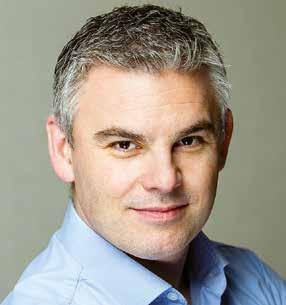
Perhaps surprising for someone with a career in aviation, Chris’s favourite way to travel is taking a road trip or a sleeper train.
“After Caius I drove across the USA coast to coast with a friend. I’ve been lucky enough to go on the Orient Express, that was amazing. I’ve travelled in France and up to Scotland on overnight trains. I will admit there is a bit of romance to rail travel!”
On the flying bucket list are India “before too many of its quirks are smoothed out” and New Zealand, to quench his wife’s thirst for The Lord of the Rings
Chris GoaterNext time there is a clear sky, look up to the moon with a pair of binoculars and if its western quadrant is visible, the bright crater Aristarchus is unmistakable. North west of Aristarchus lies the crater Wollaston.
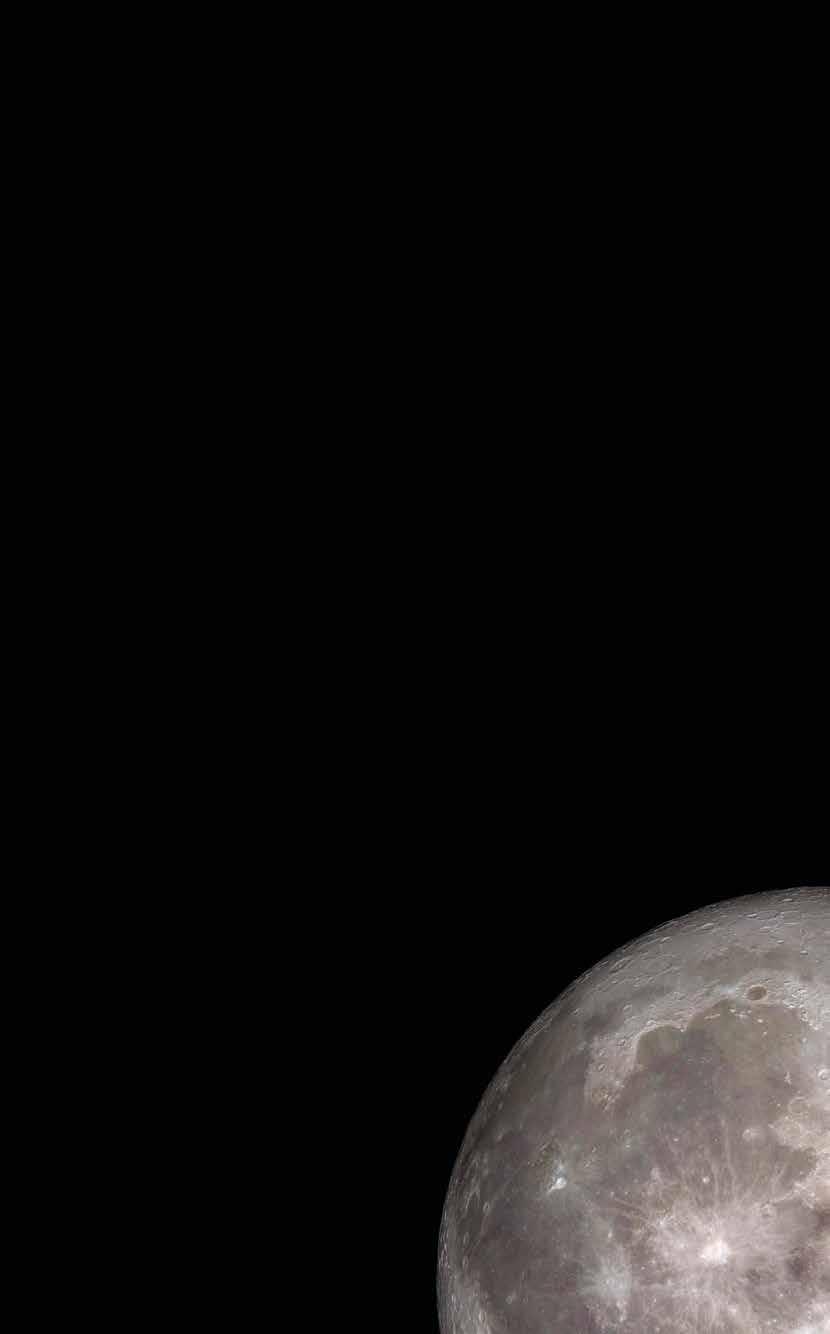
William Wollaston 1766–1828 was a Caius medic but is best known for his work as a chemist working on the platinum group metals, extracting a malleable form of platinum from its ore and discovering the elements palladium and rhodium in 1802 and 1804 respectively.
The Jesuit priest Giovanni Riccioli made an early lunar map in 1651 that introduced a system of nomenclature naming the craters after well-known scientists. The naming system has continued but since 1919 names have to be approved by the International Astronomical Union (IAU).
The Wollaston crater name was approved by the IAU in 1935. The main crater has a diameter of 9.64km at Selenic latitude and longitudes of 30.6° and -46.98° respectively. What of other Caians?
For the Apollo landings the topology of the moon had to be well understood so the lunar surface had been extensively mapped by various orbiters, including the hidden far side, giving a new large unnamed set of craters.
The IAU website allows searches of named features so it was easy to find other Lunar Caians; see https://on.doi.gov/3x4ZvLi
They are mainly but not exclusively on the far side and are listed below with data on the crater (diameter, latitudes and longitudes) and brief pen portraits (largely distilled from Wikipedia) in order of birth date. When the longitude values are less than or greater than -90° and +90° respectively they are on the far side, not visible from earth.
WILLIAM HARVEY 1578–1657
Harvey matriculated at Caius in 1593. Like Dr Caius before him he attended the University of Padua in Italy, obtaining a Doctor of Medicine degree. He returned to England, was elected as a Fellow of the Royal College of Physicians in 1607 and subsequently Physician in charge at St Bartholomew’s Hospital. De Motu Cordis was first published in 1628 and established the circulation of the blood.
GEORGE GREEN 1793–1841
133.12
Green had very little formal schooling, yet selfpublished an essay on electromagnetism in 1828. A Caian mathematician, Sir Edward Bromhead (uncle of the splendidly named Gonville Bromhead played by Michael Caine in the film Zulu) was impressed by his work and managed to persuade Green to come to Caius in 1832 at the mature age of 39 where he continued to develop some fundamental mathematics important to classical physics. Einstein claimed he was 20 years ahead of his time.
SIR CHARLES SHERRINGTON 1857–1952
Sherrington entered Caius in 1880 and became Licentiate of the Royal College of Physicians in 1886. He went on to hold professorships in Physiology at Liverpool and then Oxford. Sherrington was a neurophysiologist and received the Nobel Prize for Medicine in 1932 jointly with Edgar Adrian, regarding the functions of neurons. He was multitalented, playing football for Ipswich Town and publishing books on philosophy and Goethe inspired poetry.
Dr John Hardwick (Physics 1969) has researched the Lunar Caians immortalised in the names of the moon’s craters.Stratton matriculated at Caius in 1901 and had a distinguished military career in the First World War in the British Expeditionary Force (BEF) and remarkably served in WWII too. He became a tutor at Caius, lecturer in Mathematics and eventually Professor of Astrophysics, Director of the Solar Observatory, one time President of the Royal Astronomical Society and Fellow of the Royal Society. He wrote a history of the Cambridge Observatories in 1949.
15.07 -6.05 66.83 1979
Visible from the earth, it lies east of the Sea of Fertility

Born was a visiting student at Caius from 1908–1909 and went on to have a successful career in Physics. With the advent of the Nazi Party in Germany, Born, who was Jewish, was suspended from his professorship at Göttingen and left for the UK and St John’s College. He was awarded the Nobel Prize in Physics in 1954 for his research in quantum mechanics and the statistical interpretation of the wave function.
29.74 -52.85 -101.34 1985
Chadwick graduated from Manchester in 1911 and moved to Germany to work with Hans Geiger on radioactivity but the outbreak of WWI saw him interned there for the duration. Returning to the UK he was in receipt of a Wollaston Scholarship at Caius (1919) where he worked for his PhD under Ernest Rutherford. At the Cavendish Laboratory he discovered the neutron in 1932 and for this was awarded the Physics Nobel Prize in 1935.
Chadwick left the Cavendish Laboratory in 1935 for a professorship in Liverpool to set up a world class Nuclear Physics lab with the construction of a cyclotron. Measurements of uranium cross sections there were important to the development of the Atom Bomb and Chadwick was Head of the British Mission to the Manhattan Project. He left Liverpool in 1948 to become Master of Caius.
HOWARD FLOREY 1898–1968
69.06 87.04 -19.75 2009
A heavily eroded crater near the North Pole and visible from earth
One of Sherrington’s students while at Oxford, Florey went on to a Rockefeller Fellowship in the USA followed by a Fellowship at Caius in 1926. During his Professorship in Pathology at Oxford he read Fleming’s paper on the antibiotic properties of the penicillin mould and set out to investigate its use carrying out the first clinical trials and later its production. He shared the 1945 Nobel Prize in Medicine with Ernst Chain and Sir Alexander Fleming for their penicillin work.
View north from the Aristarchus Plateau. The Krieger Crater is at the lower edge of photograph and Wollaston is the shadowed crater in the upper left quadrant, Apollo 15 NASA
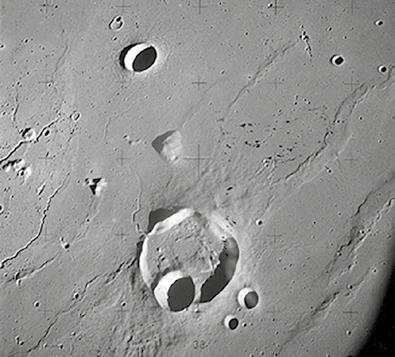 FREDRICK STRATTON 1881–1960
MAX BORN 1882–1970
SIR JAMES CHADWICK 1891–1974
FREDRICK STRATTON 1881–1960
MAX BORN 1882–1970
SIR JAMES CHADWICK 1891–1974
Martin Wade
Martin Wade, a Fellow Benefactor of Caius, has been President of Caius Boat Club since 2004.


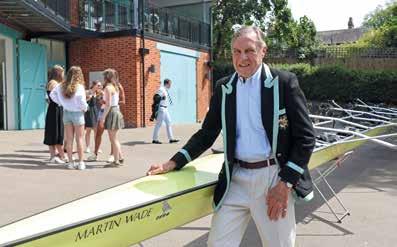
The boat Vicky Wade – named after Martin’s wife – was used by M1 in the mid to late 2000s, and the immediate predecessor to Martin Wade was Jack McDonald. Both boats were given to the Club by Martin, serving it well for many years. The Jack McDonald is still in service.
Martin’s eponymous boat was used by M1 in the May Bumps and claimed Head of the River!
In 1999 he and David Bell established the Bell Wade Fund, which provides an award for a brilliant sportsperson who has also performed outstandingly at Tripos, and a number of bursaries for other sportspeople who can make the case for financial support.
This year marked the 21st anniversary of the fund, with a drinks reception held in the Harvey Court gardens on June 20, to mark the occasion. Many previous award holders attended to thank Martin and David, whose generosity had assisted them with the costs of pursuing their chosen sport while at Caius.
It was wonderful to have so many people gathered back in College, united by their passion for sport.
A boat-naming ceremony was held in June in honour of Martin Wade (Natural Sciences/Law 1962).
THANK YOU
The Master and Fellows wish to express their warmest thanks to all Caians, parents and friends of the College who have generously made donations in the period between 1 JULY 2021 AND 30 JUNE 2022. Your gifts are greatly appreciated as they help to maintain the College’s excellence for future generations.
1935
Professor R K Guy*
1943
Dr W M Gibson†
Professor G A Gresham*
1945 Professor C N L Brooke* Dr J C S Turner†
1946
Dr D A P Burton
His Honour Judge Vos†
1948
Mr A C Barrington Brown* Mr T Garrett†
1949
Mr A G Beaumont†
Mr M E Gaisford* Mr A M Morgan Mr J Norris† Mr A W Riley†
1950
Mr D R Brewin
Mr M Buckley Sharp
Mr J G Carpenter*
Mr G H Eaton Hart*†
Dr M I Lander†
Mr G S Lowth†
Mr D L H Nash†
Mr A G C Paish†
Mr J A Potts†
Dr A J Shaw
Mr D A Skitt†
Mr S P Thompson†
Mr W A J Treneman†
1951
Dr A J Cameron†
Mr P R Castle†
Dr J E Godrich
The Revd P T Hancock†
Professor L L Jones*†
Mr E R Maile
Mr J K Moodie†
Mr S R Taylor†
Mr P E Walsh† Mr P Zentner†
1952
Dr A R Adamson†
Professor J E Banatvala†
Mr G D Baxter†
Dr M Brett†
Mr D Bullard-Smith†
Mr C J Dakin†
Dr T W Gibson†
Mr D B Hill†
Mr E J Hoblyn
Dr C W McCutchen*
Mr P J Murphy†
Mr S L Parsonson*†
Mr P S Pendered
Professor M V Riley† Dr N Sankarayya Mr R P Wilding†
1953
Mr S F S Balfour-Browne†
Mr K C A Blasdale†
Mr P H Coward*†
Dr P M B Crookes† Mr P R Dolby†
Mr S B Ellacott*
Professor C du V Florey†
Mr G H Gandy†
Mr C G Heywood
Mr C B Johnson†
Dr D H Keeling†
Professor J G T Kelsey
Mr J E R Lart†
Mr R Lomax† Dr D M Marsh†
Dr M J Orrell†
Mr T I Rand†
Mr J P Seymour† Mr I P Sharp*
1954
Professor M P Alpers
Mr D R Amlot†
Mr J Anton-Smith† Mr D W Bouette†
Mr D J Boyd†
Professor D P Brenton Professor C B Bucknall† Dr R J Cockerill†
Mr G Constantine
Mr D I Cook†
Mr P H C Eyers
Professor J Fletcher† Dr P F Friend Dr A E Gent†
Professor R J Heald
Mr R A Hockey
Mr R W Montgomery†
Mr B C Price
Mr R M Reeve†
Sir Gilbert Roberts Mr M H Spence†
Mr D Stanley†
Mr K Taskent
Mr P E Thomas*†
Mr B Tytherleigh
1955
Mr C F Barham†
Mr A L S Brown
Dr J H Brunton† Mr A R Campbell†
Dr M Cannon†
Mr D J Clayson Professor P D Clothier† Mr A A R Cobbold† Dr R A Durance† Dr F R Greenlees
Professor R E W Halliwell† Dr T G Jones Mr M E Lees† Mr J H Mallinson Mr J J Moyle† Mr A B Richards† Dr A P Rubin
Mr J D Taylor*† Mr H W Tharp†
1956
Mr J A Cecil-Williams* Mr G B Cobbold Dr R Cockel† Dr J P Cullen Mr J A L Eidinow Professor G H Elder† Professor J A R Friend Mr R Gibson† Mr M L Holman† Mr G J A Household† Professor A J Kirby Dr R G Lord† Mr P A Mackie Mr B J McConnell† Canon P B Morgan† Dr B E Mulhall
Mr A J Peck† Mr J A Pooles† Mr J J C Procter† Mr J V Rawson† Mr I Samuels* Mr R R W Stewart† Dr R D Wildbore† Mr J P Woods Dr D L Wynn-Williams†
1957
Dr I D Ansell† Dr N D Barnes Dr T R G Carter Dr J P Charlesworth†
The Revd D H Clark
Professor A D Cox
Mr M L Davies† Dr T W Davies† Mr E J Dickens† Dr A N Ganner Professor A F Garvie† Very Revd Dr M J Higgins† Mr E M Hoare+
Professor F C Inglis† Mr A J Kemp† Dr R T Mathieson†
Professor A J McClean† Dr B J McGreevy*
Mr C B Melluish
Mr A W Newman-Sanders†
Mr T Painter
Mr G R Phillipson†
The Rt Hon Sir Mark Potter†
Mr H J H Pugh† Mr O N Tubbs†
The Rt Hon Lord Tugendhat† Dr A Wright
1958
Mr C Andrews†
Mr R P Barwell
Dr J F A Blowers†
Mr T J Brack
Mr J P B Bryce†
Professor A R Crofts Mr A W Fuller
Mr W P N Graham†
Professor F W Heatley† Mr D M Henderson†
Mr J A Honeybone
Dr P F Hunt
Professor J O Hunter† Mr H I Hutchings Mr J G Jellett
Mr J R Kelly Mr G D King Dr R P Knill-Jones† Mr E A B Knowles† Mr R D Martin Mr C P McKay† Dr D R Michell Mr T S Nelson Dr J V Oubridge
Mr G D Pratten† Mr M Roberts Dr G R Rowlands
Mr M P Ruffle+
Sir Colin Shepherd† Mr A Stadlen†
Sir Keith Stuart†
Mr A J Taunton†
Mr D G W Thomas*
Professor B J Thorne Mr F J W van Silver†
1959
Professor D S Brée
Dr D E Brundish†
Mr H R G Conway
Dr A G Dewey†
Mr T H W Dodwell
Mr B Drewitt†
The Revd T C Duff†
The Rt Revd D R J Evans†
The Reverend John Gawne-Cain
Mr G A Geen†
Mr P M Hill†
Mr M J D Keatinge†
Mr H J A McDougall*†
Mr R G McNeer
Mr C J Methven†
Mr M M Minogue
Mr P Neuburg†
Mr B M Pearce-Higgins
Mr J H Riley†
Mr G S H Smeed
Professor P Tyrer† Dr I G van Breda†
Dr A G Weeds†
Mr J T Winpenny† Dr M D Wood Mr P J Worboys
1960
Dr N A Bailey
Mr J G Barham†
Mr B C Biggs† Mr R A A Brockington
Dr D I Brotherton*†
His Hon Peter Cowell†
Mr J M Cullen
Dr C H Gallimore†
Mr N Gray Dr D F Hardy
Mr J J Hill
Mr M H Jericho
Dr P M Keir
Mr A Kenney†
Dr M J Lindop
Dr P Martin†
Mr M B Maunsell†
Dr H F Merrick†
Dr E L Morris
Dr C H R Niven†
Mr M O’Neil
Mr P Paul
Professor A E Pegg† Dr J D Powell-Jackson
Dr A T Ractliffe†
Mr P G Ransley
Dr R A Reid†
Dr F H Stewart
Dr M T R B Turnbull†
Professor P S Walker Professor M S Walsh
Mr G C Watt
Mr N J Winkfield
Mr R D S Wylie
Dr G R Youngs
Dr A M Zalin†
1961
Mr C E Ackroyd
Professor G G Balint-Kurti
Mr A D Bell*†
Professor R S Bird*†
Professor P M Blaikie Dr P A Bretscher
Mr P A Bull
Mr J O Davies Dr J Davies-Humphreys†
Mr T Ducat
Mr D K Elstein†
Mr J A G Fiddes†
Mr M J W Gage
Mr M D Harbinson*
Dr A B Loach+
Mr A W B MacDonald
Professor R Mansfield†
Mr P Marchbank
Professor P B Mogford†
Mr A G Munro†
Mr J Owens†
Mr C H Pemberton
Mr M J Potton
Sir Marcus Setchell
Mr D C W Stonley
Mr V D West†
Mr P N Wood
Mr R J Wrenn†
1962
Mr D J Bell†
Dr C R de la P Beresford†
Mr J P Braga†
Mr M D Braham
Mr P S L Brice†
Mr R A C Bye†
Mr J R Campbell
Dr D Carr†
Mr R D Clement
Mr P D Coopman†
Mr T S Cox†
Col M W H Day†
Mr W R Edwards†
Mr M Emmott†
Mr T M Glaser†
Dr C A Hammant†
Mr A D Harris MBE†
Mr D Hjort†
Dr J B Hobbs
Professor A R Hunter†
Mr P A C Jennings†
Mr J W Jones†
Dr D M Keith-Lucas
Professor J M Kosterlitz†
Mr F J Lucas
Mr A R Martin
Professor Sir Andrew McMichael†
Dr C D S Moss†
Dr R N F Simpson+
Mr R Smalley†
Mr R B R Stephens+
Mr A M Stewart†
Mr J D Sword†
Mr W J G Travers
Mr F R G Trew†
Mr M G Wade
Mr G J Weaver†
Mr H N Whitfield
Mr R G Williams
1963
Dr P J Adams†
Dr B H J Briggs
Mr P J Brown
Mr E F Cochrane
Mr R M Coombes†
Mr M H Dearden
Dr J R Dowdle
Mr T R Drake
Professor M T C Fang
Dr S Field
Dr H P M Fromageot
Mr J E J Goad†
Mr P M G B Grimaldi
Mr N K Halliday
Mr J L Hungerford*†
Dr R H Jago†
Dr P Kemp Mr M S Kerr†
Dr R Kinns
Dr V F Larcher Dr R W F Le Page†
Mr D A Lockhart†
Mr J W L Lonie
Mr J d’A Maycock
Mr D B Newlove Dr J R Parker†
Mr I H K Scott
Mr P F T Sewell
Dr J B A Strange Dr J Striesow
Professor D J Taylor†
The Hon Mr Justice
Tugendhat
Mr P H Veal†
Dr M J Weston
1964
Mr P Ashton†
Mr D P H Burgess†
Mr J E Chisholm†
Dr H Connor
Mr H L S Dibley
Mr N R Fieldman
Dr P G Frost†
Mr J S Gillespie Dr H R Glennie
Dr R J Greenwood†
Professor N D F Grindley† Professor J D H Hall†
Professor K O Hawkins
Mr B D Hedley† Professor Sir John Holman
The Revd Canon R W Hunt
Mr A Kirby† Dr R K Knight
Mr S J Mawer†
Mr J R Morley
Mr R Murray† Mr A K Nigam†
Mr J H Poole
Dr W T Prince Dr C N E Ruscoe†
Mr J F Sell†
Dr R Tannenbaum†
Mr A N Taylor
Mr K S Thapa
Mr C W Thomson Dr T B Wallington† Dr F J M Walters† Mr R C Wells†
1965
Dr P J E Aldred
Professor L G Arnold† Professor B C Barker†
Mr R A Charles
The Rt Hon Sir Christopher
Clarke †
Dr C M Colley†
Mr G B Cooper
Mr J H Finnigan†
Mr J Harris
Dr D A Hattersley†
The Revd P Haworth†
His Hon Richard Holman†
Mr R P Hopford†
Dr K Howells
Dr R G Jezzard†
Mr K E Jones†
Dr R R Jones
Mr J R H Kitching†
Dr H J Klass
The Hon Dr J F Lehman†
Dr M J Maguire† Dr P J Marriott† Mr J J McCrea Mr T Mullett† Dr J W New Dr K J Routledge
Mr R N Rowe† Dr D J Sloan Mr M L Thomas Mr I D K Thompson† Professor J S Tobias Mr I R Whitehead
Mr A T Williams
Mr C H Wilson† Mr D V Wilson† Lt Col J R Wood†
1966
Professor D Birnbacher Mr D C Bishop
Dr D S Bishop† Mr P Chapman† Dr C I Coleman Dr K R Daniels† Dr T K Day† Mr C R Deacon† Mr D P Dearden† Mr R S Dimmick Mr P S Elliston† Mr J R Escott† Mr W P Gretton*† Mr D R Harrison† Dr L E Haseler† Mr R E Hickman† Mr R Holden† Dr R W Howes Professor R C Hunt† Dr W E Kenyon† Mr D C Lunn Dr P I Maton Dr A A Mawby† Professor P M Meara Mr P V Morris Mr K F Penny Mr S Poster† Mr J N B Sinclair Mr R B N Smither Dr R L Stone† Mr N E Suess Mr D Swinson† Dr A M Turner Mr J F Wardle† Mr S M Whitehead† Mr J M Williams†
The Revd R J Wyber
1967
Mr G W Baines
Mr N J Burton† Dr R J Collins Mr P G Cottrell Mr G C Dalton Mr A C Debenham† Mr P E Gore† Mr D G Hayes Dr W Y-C Hung† Mr J R Jones
Mr N G H Kermode† Mr R J Lasko†
Mr D I Last† Dr I D Lindsay† Mr D H Lister† Mr R J Longman Dr E A Nakielny†
Mr W M O Nelson† Professor N P Quinn Mr J S Richardson Mr P Routley† Mr M S Rowe Professor J B Saunders Mr H J A Scott Dr C Shindler Mr G T Slater†
Mr C A Williams
The Revd Dr J D Yule
1968
Dr M J Adams†
Mr P M Barker
Mr P E Barnes
Mr I M D Barrett
Dr F G T Bridgham†
Mr A C Cosker†
Professor P R Croft Mr J P Dalton†
Mr C Fletcher† Mr D P Garrick†
Mr D S Glass
Mr M D Hardinge
Dr G W Hills
Dr P W Ind†
Professor R J A Little† Dr D H O Lloyd† Dr R C H Lyle†
Mr B A Mace
Mr J I McGuire Dr J Meyrick Thomas†
Mr J A Norton†
Mr M E Perry† Dr T G Powell†
Mr S Read†
Professor J F Roberts
Mr E Robinson Mr P S Shaerf
Mr P J E Smith†
Mr N A Stone Dr M McD Twohig
Dr G S Walford†
Mr C Walker
Dr D P Walker†
Mr P E Wallace†
Dr P R Willicombe†
Mr V Wineman
1969
Dr S C Bamber† Dr A D Blainey Mr S E Bowkett
Mr A C Brown† Dr R M Buchdahl Mr M S Cowell† Dr M K Davies Mr S H Dunkley† Dr M W Eaton†
Mr R J Field† Professor J P Fry† Dr C J Hardwick
Professor A D Harries†
Mr J S Hodgson†
Mr M J Hughes Mr T J F Hunt
Mr S B Joseph† Mr A Keir†
Dr I R Lacy† Mr C J Lloyd†
Mr S J Lodder†
Mr R G McGowan†
Dr D W McMorland
Dr C M Pegrum†
Dr D B Peterson
Mr P J M Redfern
Mr T D Stanley-Clamp
Mr B A H Todd
Mr P B Vos†
Mr A J Waters†
Dr N H Wheale†
Professor D R Widdess† Mr C J Wilkes†
Mr J M Wilkinson Mr P J G Wright†
1970
Mr R B Andreas†
Mr J Aughton†
Mr D Brennan†
Mr R Butler
Dr D D Clark-Lowes†
Mr G J H Cliff†
Mr R P Cliff†
Mr L P Foulds†
Dr D R Glover
Mr O A B Green†
Mr J D Gwinnell†
Mr D P W Harvey
Mr J W Hodgson
Professor J A S Howell†
Mr S D Joseph†
Mr N R Kinnear† Mr J H Lambie Mr M J Langley
Mr R T Lewis Mr B S Missenden† Dr S Mohindra†
Mr A J Neale
Mr J C Needes
Professor D J Reynolds†
Mr J S Robinson†
Mr B Z Sacks† Dr R D S Sanderson†
Mr D C Smith
Dr S A Sullivan
Dr S W Turner
Mr I R Watson
Professor R W Whatmore† Professor G Zanker
1971
Dr J P Arm
Mr M S Arthur†
Mr J P S Born
Mr S Brearley†
Mr J A K Clark† Dr R C A Collinson† Mr J A Duval† Professor A M Emond Mr J-L M Evans† Dr S H Gibson
Mr L J Hambly Professor D M Hausman Professor M A Horan Professor B Jones Dr P Kinns† Dr G Levine
Dr P G Mattos†
Mr R I Morgan† Mr L N Moss†
Mr N D Peace†
Mr S R Perry
Mr K R Pippard
Mr P J Robinson
Professor R B Sales*
Mr T W Squire Dr P T Such† Mr P A Thimont
Mr A H M Thompson† Mr S V Wolfensohn† Mr S Young*
1972
Mr M H Armour
Mr A B S Ball†
Mr J P Bates†
Mr S M B Blasdale†
Mr N P Bull
Mr C G Davies Mr P A England
Mr J E Erike†
Mr P J Farmer†
Mr C Finden-Browne†
Mr R H Gleed†
Mr R S Handley†
Dr C H Henshall
Mr P K C Humphreys
Mr A M Hunter Johnston
Professor W L Irving†
Mr J K Jolliffe
Dr D R Mason†
Mr C H Metcalfe
Mr J R Moor†
Mr M D Roberts† Mr S J Roberts
Mr J Scopes† Professor A T H Smith†
Mr M J Spinks
Dr T D Swift†
Mr P J Taylor
The Revd Dr R G Thomas
Mr R E W Thompson†
Dr A F Weinstein†
Canon Dr J A Williams
1973
Dr A P Allen
Dr S M Allen†
Mr N P Carden
Mr J P Cockett
Professor P Collins
Mr S P Crooks†
Mr M G Daw†
Dr P G Duke
Mr P C English
Mr A G Fleming
Mr R Fox
Mr J R Hazelton
Mr D J R Hill†
Dr R J Hopkins
Mr F How
Mr W A Jutsum
Mr K F C Marshall
Mr J S Morgan†
Mr J S Nangle†
Dr S P Olliff
Professor T J Pedley†
Mr J F Points†
Mr K S Silvester
Dr W A Smith
Mr J Sunderland†
Mr H B Trust†
Mr G A Whitworth
1974
Dr D F J Appleton
Mr H J Chase
Revd Dr V J Chatterjie
Dr L H Cope
Mr P R B Dallard
Mr M D Damazer
Professor J H Davies†
Professor A G Dewhurst†
Dr E J Dickinson
Mr C J Edwards†
Professor L D Engle
Mr J C Evans
Mr R J Evans
Mr P A Goodman†
Dr P J Guider†
Mr S J Hampson
Dr W N Hubbard
Mr P Logan†
Mr R O MacInnes-Manby†
Mr G Markham†
Dr C H Mason†
Mr J G A McClean
Professor B Reddy
Mr N J Roberts
Dr J J Rochford†
Dr D S Secher†
Mr C L Spencer†
Mr W C Strawhorne
The Rt Hon Lord J A Turner
Dr A M Vali
Mr D K B Walker†
Mr S T Weeks†
1975
Dr C J Bartley
Mr D A L Burn
Mr S D Carpenter
Sir Anthony
Cooke-Yarborough†
Mr E A M Ebden
Dr M J Franklin†
Mr N R Gamble
Mr M H Graham†
Mr R L Hubbleday
Mr D J Huggins
Mr D M Mabb QC
Dr R G Mayne†
Dr M J Millan
Mr K S Miller†
Dr C C P Nnochiri†
Professor I P L Png & Ms J C W Cheng
Dr H C Rayner
Mr D J G Reilly†
Mr P J Roberts
Mr G R Sherwood† Dr F A Simion Dr J M Thompson†
1976
Mr G Abrams
Mr J J J Bates†
Mr S J Birchall
Mr N S K Booker
Mr L G Brew†
Dr M P Clarke†
The Revd Canon B D Clover
Mr D J Cox†
Dr G S Cross
Mr R J Davis†
Dr P H Ehrlich
The Hon Dr R H Emslie†
Dr M J Fitchett
Mr S D Flack
Mr M Friend
Dr P D Glennie
Dr K F Gradwell†
Dr G C T Griffiths
Professor J Herbert†
Dr A C J Hutchesson†
Mr R A Larkman†
Mr S H Le Fevre

Dr C Ma Dr P B Medcalf† Dr S J Morris
Dr D Myers Dr R H Poddubiuk
Mr J S Price
Mr R G Sanders
P L Simon†
Dr S G W Smith
Mr S Thomson†
Mr J P Treasure†
The Rt Hon N K A S Vaz
Professor O H Warnock Mr A Widdowson†
1977
Mr J H M Barrow†
Mr M A Bentley Mr A C Boulding
Mr R Y Brown†
Dr M S D Callaghan†
Dr P N Cooper†
Mr S H McD Denney
Dr J W Durman
Professor K J Friston†
Mr A L Gibb†
Dr D J Gifford
Mr K F Haviland
Mr R M House†
Professor G H Jackson
Mr K A Mathieson†
Dr P H M McWhinney†
Mr H N Neal
Dr R P Owens†
Professor A Pagliuca†
Dr K W Radcliffe
Mr I M Radford†
Mr P J Radford†
Dr P A Watson†
Mr D J White†
Mr M J Wilson†
Mr L M Wiseman†
Professor E W Wright†
1978
Mr J C Barber†
The Revd Dr A B Bartlett
Dr T G Blease†
Mr M D Brown†
Mr B J Carlin†
Mr C J Carter†
Mr J M Charlton-Jones
Mr S A Corns† Mr M J Cosans
Mr A D Cromarty
Dr P G Dommett†
Dr J A Ellerton
Mr J S Evans
Mr R J Evans†
Mr P G S Evitt
Professor P M Goldbart Mr A B Grabowski
Mr A D Halls
Dr E Hatchwell Dr M Hernandez-Bronchud Dr C N Johnson†
Mr P R M Kavanagh
Mr D P Kirby† Mr R A Lister† Dr D R May Mr A J Noble† Mr T D Owen†
Mr R J Pidgeon Mr S Preece Mr P J Reeder† Mr M H Schuster†
Mr P A F Thomas
Dr D Townsend† Mr R W Vanstone Dr P Venkatesan Dr W M Wong† Mr P A Woo-Ming†
1979
Dr R Aggarwal
Mr D J Alexander Mr T C Bandy† Mr A J Birkbeck† Dr P J Carter
Mr W D Crorkin† Dr A P Day Mr N G Dodd
Professor T J Evans† Mr P C Gandy† Ms C A Goldie Dr A R Grant Dr M de la R Gunton† Mr N C I Harding† Mr R P Hayes† Mr T E J Hems† Ms C J Jenkins Mr P J Keeble Dr M E Lowth Mr A D Maybury† Mr D L Melvin Professor C T Reid Ms A M Roads Dr C M Rogers Mr E J Ruane Professor P C Taylor Professor R P Tuckett
1980
Mr A M Ballheimer Dr L E Bates† Dr N P Bates†
Mr C R Brunold† Mr C R Crawford Clarke Mr A R Dale Mr A W Dixon
The Revd Dr P H Donald Mr R M Glover Dr S L Grassie† Mr M J Hardwick Dr E M L Holmes† Mr R H Hopkin Dr J M Jarosz
Mr H M H Jones Mr S J Lowth Dr J Marsh Professor Sir Jonathan Montgomery† Dr J N Pines†
Mr J H Pitman Mr R N Porteous†
Mr T N B Rochford
Ms J S Saunders†
Mr J M E Silman†
Mrs M S Silman†
Professor J A Todd† Mr R L Tray† Dr C Turfus† Dr S J Ward
1981
Mrs J S Adams
Dr M A S Chapman
Mr G A H Clark
Mr S Cox Dr N M Crickmore
Mr J M Davey†
Mr P M de Groot Dr M Desai
Mr D P S Dickinson†
Mr N J Farr
Mr R Ford†
Mr A W Hawkswell
Mr W S Hobhouse†
Mr R H M Horner†
Mr P C N Irven†
Mr B D Jacobs
Professor T E Keymer†
Ms F J C Lunn
Mr P J Maddock†
Dr J W McAllister
Dr M Mishra
Dr A P G Newman-Sanders Dr O P Nicholson
Mr G Nnochiri† Mr J M Owen Dr C M Pereira
Mr G A Rachman†
Mrs B J Ridhiwani Mrs M Robinson Dr R M Roope†
Mr D P Rosenberg Mrs D C Saunders
Mr T Saunders
Dr D M Talbott†
Mr K J Taylor Ms L J Teasdale†
Ms A M Tully†
Mr C J R Van de Velde
Mr R A Warne†
Dr E A Warren†
Mr P M Wenham
Ms S Williams
1982
Dr A K Baird†
Mr D Baker†
Mr J D Biggart† Dr C D Blair
Dr M Clark
Mr P A Cooper† Dr M C Crundwell† Mr G A Czartoryski Professor S M Fitzmaurice
Mr D A B Fuggle
Mr J C Gordon Dr I R Hardie
Dr R M Hardie Mr P D Hickman
Mr P Loughborough Ms E F Mandelstam
Professor M Moriarty†
Ms N Morris†
Mr R J Powell
Dr C E Redfern
Professor S A T Redfern
Professor A Roberts
Ms A L Rodell
Mr J P Scopes
Mrs A J Sheat
Ms O M Stewart†
Mrs E I C Strasburger† Dr J G Tang†
1983
Dr J E Birnie†
Mrs K R M Castelino†
Professor S-L Chew
Professor J P L Ching† Mr H M Cobbold† Dr S A J Crighton† Dr A Dhiman† Dr N D Downing
Mr A L Evans†
Sir Timothy Fancourt† Mr P E J Fellows† Dr W P Goddard†
Professor D R Griffin
Mr W A C Hayward† Mr J St J Hemming
Mr R M James†
Caius provides its students with more than £1 million a year in financial support
Mr S J Kingston
Mr S A Kirkpatrick
Mrs H M L Lee†
Mr J B K Lough†
Dr R C Mason
Mr A J McCleary†
Mr R H Moore
Mr R M Payn†
Mr J A Plumley
Mr A B Porteous
Mr K C Rialas
Mrs S D Robinson†
Mrs N Sandler
Mr H C Shields
Dr C P Spencer†
The Revd C H Stebbing†

Mr A G Strowbridge
Mr R B Swede†
Mr C H Umur
Professor J L Watts
Mr P G Wilkins
Dr K M Wood†
Dr S F J Wright
1984
Dr H T T Andrews†
Dr K M Ardeshna
Mr D Bailey
Mr R A Brooks†
Mr G C R Budden†
Dr R E Chatwin
Dr S E Chua
Professor H W Clark
Mrs N J Cobbold†
Mr S R B Done
Dr A R Duncan†
Professor T G Q Eisen
Dr A S Gardner†
Mr L J Hunter†
Mr M A Lamming
Mr G C Maddock†
Mr A D H Marshall†
Mr J R Pollock†
Dr K S Sandhu†
Mrs K S Slesinger
Mrs E J Staples
Dr M R Temple-Raston
Professor C Wildberg
Dr H E Woodley†
1985
HE Mr N M Baker†
Ms C E R Bartram†
Dr I M Bell+
Mrs J C Cassabois
Mr A H Davison†
Dr J P de Kock
Professor E M Dennison†
Mr K J Fitch
Mr M J Fletcher
Mrs E F Ford†
Mr R G Goodfellow
Mr J D Harry†
Ms P Hayward
Mr P G J S Helson†
Mr J A Howard-Sneyd†
Dr C H Jessop
Mr C L P Kennedy
Mr W P L Lawes
Mrs C F Lister
Mrs N M Lloyd†
Ms J M Minty
The Very Revd
N C Papadopulos
Dr R J Penney
Ms S L Porter†
Mr M H Power
Dr D S J Rampersad
Mr A B Ridgeway
Ms E A Roberts
Dr L J Roberts
Mr R Sayeed
Miss J A Scrine†
Mr E J Shaw-Smith
Dr P M Slade†
Mrs E M Smuts
Mr B M Usselmann
Mr W D L M Vereker
Mr M J J Veselý
Mrs J S Wilcox†
Mrs A K Wilson Dr J M Wilson
Mr R C Wilson
Mr N A L Wood
Dr E F Worthington† Dr A M Zurek
1986
Mr H J H Arbuthnott
Ms C B A Blackman
Professor K Brown Mr M T Cartmell
Mr J H F & Mrs A I Cleeve
Mr A J F Cox†
Professor J A Davies† Mrs J Durling
Dr S D Farrall
Mr M J Fuller Mr A N Graham Mr R J Harker† Dr L M Hill Dr M P Horan
Professor J M Huntley†
Mr M C Jinks
Mr B R Kent Mrs V K Kent
Dr H V Kettle
Professor J C Knight
Professor M Knight Mr B D Konopka
Ms A Kupschus†
Professor J C Laidlaw† Dr A P Lock
Dr G H Matthews
Dr D L L Parry†
Mr S K A Pentland
Mr H T Price†
Professor P Rogerson Mr H J Rycroft
Mr J P Saunders† Mr C D Sheldon Ms V H Stace
Mrs E D Stuart† Mr J W Stuart† Dr A J Tomlinson Mr S A Wajed Mr J P Young Mr C Zapf
1987
Mr J R Bird+ Mr N A Campbell Mr N R Chippington† Mr A J Coveney† Dr L T Day Mr C H Dodwell Mr C P J Flower Mr S L Jagger† Dr M Karim Dr P Kumar† Mr D M Lambert† Dr J O Lindsay Ms P A Nagle Dr W P Ridsdill Smith Ms E A C Rylance Dr J Sarma Dr M Shahmanesh† Mr D W Shores† Mr A B Silas
Mr B R Tarlton
Mr J M L Williams Dr T J A Winnifrith
1988
Dr K J Brahmbhatt
Ms M R Bresgall
Mr H A Briggs†
Dr A-L Brown+
Mr J C Brown†
Ms C Stewart†
Mrs M E Chapple†
Mrs A I Cleeve
Mr B D Dyer
Mr E T Halverson
Dr E N Herbert
Ms A E Hitchings
Ms R C Homan†
Dr A D Hossack† Dr O S Khwaja
Dr A P S Kirkham†
Mr F F C J Lacasse
Mr F P Little† Ms V H Lomax† Dr I H Magedera Dr M C Mirow
Dr A N R Nedderman†
Dr D Niedrée-Sorg
Mrs K J Pahl
Mr A P Parsisson Mrs R J Sheard
Dr R M Sheard
Mr A D Silcock
Dr R C Silcock
Mrs A J L Smith†
Mr A J Smith†
Mr R D Smith† Dr R M Tarzi
Ms F R Tattersall†
Mr M E H Tipping Mrs L Umur Mr A E Wellenreiter Dr F J L Wuytack†
1989
Dr C L Abram
Professor J J E M Bael Mr S P Barnett Dr C E Bebb
Ms M S Brown
Professor M J Brown† Dr E A Cross† Dr S Francis Mr G R Glaves† Dr C Grote
Mrs R C Harris
Mr S M S A Hossain†
Dr P M Irving†
Mr G W Jones†
Mr J P Kennedy† Mr J R Kirkwood† Dr H H Lee
Dr S Lee
Dr R B Loewenthal
Mrs L C Logan†
Mr P J Moore†
Ms J H Myers† Dr S L Rahman Haley
Mr N J C Robinson†
Mrs C Romans†
Mr A M P Russell†
Mrs D T Slade
Dr N Smeulders†
Professor L Smith Mr J A Sowerby†
Dr K K C Tan
Mr A S Uppal
Mrs E H Wadsley†
Mrs T E Warren†
1990
Ms A Akhlaque
Mr A Bentham
Mrs C M A Bentham
Mrs E C Browne
Mr M H Chalfen†
Ms V N M Chan
Professor L C Chappell†
Mrs Z M Clark
Dr A A Clayton†
Mr I J Clubb†
Mr P E Day†
Mrs S V Dyson
Dr D S Game†
Mrs C L Guest†
Mr A W P Guy†
Dr C C Hayhurst†
Dr A D Henderson†
Mr I Henderson†
Mr R D Hill†
Mr H R Jones†
Dr P A Key QC
Mr D H Kim
Dr S H O F Korbei† Mr G C Li
Ms A Y C Lim
Ms R Mandal
Mr J S Marozzi†
Miss M L Mejia
Mr T Moody-Stuart QC†
Mr G O’Brien
Mr S T Oestmann†
Dr C A Palin
Dr J M Parberry†
Dr J Sinha†
Professor M C Smith
Mr G E L Spanier
Professor S A R Stevens
Mr H K Suniara Mr D S Turnbull
Dr J C Wadsley† Ms R M Winden
1991
Mr B M Adamson
Ms J C Austin-Olsen†
Dr R D Baird†
Dr A A Baker†
Mr C S Bleehen†
Mr A M J Cannon†
Mr D D Chandra†
Dr C Davies Dr A H Deakin†
Mrs C R Dennison†
Dr S Dorman
Ms V J Exelby
Dr C S J Fang†
Dr S C Francis†
Mr I D Griffiths†
Mr N W Hills
Dr A J Hodge†
Dr J P Kaiser†
Professor F E Karet
Professor K-T Khaw
Dr A D Kippen
Mrs V K Leamon
Mr I J Long†
Mr D F Michie
Mrs L P Parberry†
Dr J E Rickett
Ms I A Robertson
Dr S M Shah
Mr A Smeulders†
Mr J G C Taylor†
Ms G A Usher†
Mrs H-M A G C Vesey
Mr C S Wale†
Mr M N Whiteley
Mr S J Wright†
1992
Dr M R Al-Qaisi†
Ms E H Auger
Mr D Auterson
Mrs R Auterson
Mrs S P Baird†
Mr J P A Ball
Ms S F C Bravard†
Mr N W Burkitt†
Ms J R M Burton†
Ms M H L Chan
Dr K J Daly
Mr W T Diffey†
Miss A M Forshaw
Dr E M Garrett†
Mr R A H Grantham†
Mrs F M Haines
Mr O Herbert†
Dr S L Herbert†
Ms J Z Z Hu
Mr E M E D Kenny
Dr R M Lees
Mr J Lui†
Mr A J Matthews
Dr C R Murray†
Mr M R Neal
Mr R L Nicholls
Mrs J A O’Hara
Dr K M Park
Dr M S Sagoo
Mr J D Saunders†
Mr P Sinclair
Mrs S L Sinclair
Mrs R C Stevens†
Dr S E Swinson
Dr A Tomkinson
Mr R O Vinall
Mrs J M Walledge†
Mr L K Yim
1993
Mr M J Beniston
Dr A C G Breeze†
Ms A J Brownhill
Dr C Byrne
Mr P M Ceely†
Mrs J L Crowther
Mr B M Davidson
Dr A S Everington†
Dr A Gallagher†
Dr F A Gallagher†
Ms T R Ganendra
Mr J C Hobson
Mr C E G Hogbin†
Dr A Kalhoro
Mr C S Klotz
Ms A J S Lanes
Dr A B Massara
Dr S B Massara
Mr M R Nogales
Dr A J Penrose
Mr R B K Phillips†
Mrs A C Pugsley
Dr J F Reynolds†
Mrs L Robson Brown†
Dr R Roy
Dr T Walther
Ms S T Willcox
Dr F A Woodhead
Mrs A J Worden
Mr T J A Worden
1994
Mr J H Anderson
Dr R A Barnes†
Professor D M Bethea
Dr L Christopoulou†
Dr D J Crease†
Dr D J Cutter
Mr N Q S De Souza†
Mr D R M Edwards
Dr T C Fardon†
Dr J A Fraser
Mr S S Gill†
Mrs C E Grainger†
Mr R S Greenwood
Mrs E Haynes†
Mr R J M Haynes†
Dr P M Heck
Dr A P Khawaja†
Mrs R A Lyon
Mr M J McElwee
Professor S G A Pitel†
Mr P D Reel†
Dr M J P Selby
Professor P Sharma
Dr P J Sowerby Stein
Dr A D Spier
Professor M A Stein Dr K-S Tan Dr R R Turner†
Mr A R J Wightman
Mr M A Wood
1995
Mr C Aitken
Dr R A J Carson
Mr C Chew†
Dr S L Dyson
Mrs J A S Ford†
Dr Z B M Fritz
Dr E A Harron-Ponsonby†
Mr J R Harvey†
Dr N J Hillier†
Ms L H Howarth†
Ms J Kinns†
Mr B J Marks
Canon Prof J D McDonald†
Dr D N Miller†
Dr M A Miller†
Dr C A Moores
Professor K M O’Shaughnessy
Mr S M Pilgrim
Miss M-J Rhee Dr B G Rock†
Dr K L Scarfe Beckett
Ms T J Sheridan† Mr D S Shindler
Mr M J Soper Dr S Vermeren
Mrs S A Whitehouse†
Dr C H Williams-Gray†
Miss M B Williamson Mr E G Woods Dr X Yang
1996
Mrs S E Birshan
Dr J R Bonnington
Miss A L Bradbury†
Ms C E Callaghan
Mr K W-C Chan†
Maj J S Cousen†
Mr A E S Curran
Mr G D Earl†
Professor J Fitzmaurice
Professor D A Giussani† Mr J D Goldsmith
Mr I R Herd†
Dr O A R Mahroo
Miss F A Mitchell Ms J N K Phillips
Dr S Rajapaksa
Mr A J T Ray†
Ms V C Reeve†
Mr P S Rhodes
Mr J R Robinson†
Mr C M Stafford†
Mr D J Tait
Ms E-L Toh
Dr P G Velusami
Mr B T Waine†
Mr K F Wyre†
1997
Mrs L J Allen
Mr P J Allen
Mr A J Bower†
Mr J D Bustard†
Miss J M Chrisman
Mrs R V Clubb†
Ms R F Cowan
Mr I Dorrington
Mrs J R Earl†
Dr E J Fardon† Dr P J Fernandes
Dr S P Fitzgerald Mr J Frieda Dr D M Guttmann†
Ms C T Hui
Mr L T L Lewis†
Dr E A Martin† Ms V E McMaw† Dr A L Mendoza† Dr S Nestler-Parr Ms L E North
Ms R N Page†
Mr B Sulaiman† Dr R Swift Mr J P Turville
1998
Ms H M Barnard† Mr D M Blake†
Mr A J Bryant
Mr M P Chennells Mr D W Cleverly† Mr B N Deacon Dr P J Dilks† Mr J A Etherington† Dr S E Forwood† Dr C Frances-Hoad Mrs J M Grabowski
The Revd Dr J M Holmes† Dr C C C Hulsker
Dr L Knutzen Mr A J Pask† Dr J C P Roos Dr O Schon† Dr A J West Mrs J C Wood Mr R A Wood† Mr D J F Yates†
1999
Mr P J Aldis Mr I Anane Dr A Bednarski
Mr R F T Beentje† Miss C M M Bell† Mr D T Bell†
Dr C L Broughton† Ms J W-M Chan† Mr J A Cliffe† Mr J D Coley† Mr J R S Coupe Ms H B Deixler Ms L M Devlin† Mr P M Ellison Mr A Fiascaris
Ms S Gnanalingam† Dr O P Guttmann Mr A F Kadar† Mr C M Lamb† Mr M W Laycock†
Mr N O Midgley Mr M A Pinna† Ms A J C Sander Dr J D Stainsby† Professor T Straessle Mrs L N Williams Mr P J Wood Dr P D Wright†
2000
Dr M J Borowicz† Mrs R A Cliffe† Mr M T Coates†
Dr A H K Cowan Dr A D Deeks Miss J L Dickey Mr E W Elias Mr T P Finch† Mr E D H Floyd† Mrs S Hodgson Mrs J M Howley† Dr N S Hughes Miss M Kaloghirou Mr G P F King†
Mrs V King† Ms M Lada† Dr R Lööf Dr I B Malone Dr A G P Naish-Guzmán†
Maj D N Naumann†
Mr H S Panesar†
Mr O F G Phillips† Dr C J Rayson
Mr C E Rice†
Mr M O Salvén† Mr A K T Smith† Dr M Tosic Dr D W A Wilson†
2001
Mr D S Bedi†
Miss A F Butler†
Mr J J Cassidy†
Dr J W Chan†
Dr C J Chu†
Mr E H C Corn
Mr H C P Dawe†
Dr M G Dracos†
Mr N A Eves
Mrs A C Finch†
Mr D W M Fritz
Dr T J Gardiner
Mr C M J Hadley
Ms L D Hannant†
Dr D P C Heyman
Dr A-C M L Huys Mr A S Kadar†
Mr A J Kirtley Mr C Liu Dr A Lyon†
Mr M Margrett
Mr A S Massey†
Dr A C McKnight†
Professor R J Miller†
Mr D T Morgan Mr H M I Mussa†
Miss W F Ng
Mr A L Pegg†
Dr R A Reid-Edwards†
Dr C L Riley
Ms A E C Rogers†
Mrs J M Shah†
Mr K K Shah†
Dr S J Sprague† Mr S S-W Tan
Ms F A M Treanor† Dr C C Ward Dr R A Weerakkody Dr H W Woodward
2002
Mr C D Aylard†
Mrs E R Best† Ms S E Blake† Mrs S J Brown†
Mr M L C Caflisch
Dr N D F Campbell Miss C F Dale Mr J-M Edmundson† Mrs K M Frost†
Mrs J H Gilbert†
Mrs J L Gladstone
Mr S D Gosling
Mr N J Greenwood†
Mrs A N Große Frie
Dr A C Ho
Mr T R Jacks†
Ms H Katsonga-Woodward†
Miss H D Kinghorn†
Dr M J Kleinz
Dr M F Komori-Glatz
Mr T H Land†
Mr R Mathur
Mr C J W Mitchell†
Mr C T K Myers†
Mrs C M E Nwokoro
Dr A Patel†
Dr A Plekhanov†
Mr S Queen†
Mr R E Reynolds
Mr A S J Rothwell†
Mr D A Russell† Mr A Singh Dr S Ueno
Spending on student wellbeing and pastoral support has increased by 40% over the past five years
Miss H C Ward
Ms L L Watkins
Mr C J Wickins† Miss R E Willis
2003
Mr R B Allen
Mr J E Anthony†
Mr A R M Bird
Ms C O N Brayshaw†
Mr C G Brooks
Dr E A L Chamberlain
Ms S K Chapman
Ms V J Collins†
Dr B J Dabby
Mr A L Eardley Miss E M Foster Mr T H French† Miss A V Henderson† Dr M S Holt†
Mr D C Horley† Dr S M Huisman Mr D J John
Mr J P Langford†
Dr A R Langley Dr Z W Liu
Mrs J Lucas Sammons
Mr C A J Manning†
Dr D J McKeon†
Mr K N Millar†
Mr S B Mumba
Dr C D Richter
Miss V K C Scopes† Miss N N Shah
Mr O P Simonin
Ms M Solera-Deuchar†
Mr T N Sorrel
Dr A E Stevenson† Mr S Tandon Mr J L Todd† Dr V C Turner Dr R C Wagner Mr C S Whittleston
Mrs S S Wood† Professor Z Yang
2004
Mr S R F Ashton†
Mr M G Austin
Dr E F Aylard†
Mr T C R Bracey
Mrs D M Cahill
Mrs H L Carter†
Mr S D Carter
Mrs R C E Cavonius
Dr T M-K Cheng
Dr A Clare
Dr R Darley
Dr A V L Davis
Mr B C G Faulkner†
Dr L C B Fletcher†
Mr R J Gardner†
Ms C L Lee†
Mr W S Lim
Ms C M C Lloyd-Griffiths
Ms G C McFarland†
Mr P E Myerson†
Mr J W G Rees
Dr C Richardt
Mrs L R Sidey
Mr G B H Silkstone Carter†
Mr G Z-F Tan†
Mrs E M Taster
Mr H P Vann†
Mr L B Ward
2005
Ms P D Ashton
Mr B Barrat
Dr D P Chandrasekharan
Mr R R D Demarchi
Mr M W Evans
Miss E M Fialho†
Miss J M Fogarty†
Miss K V Gray
Mrs K L Greenwood
The Revd Dr C Hammond
Mr J S B Hickling
Mr J M Hunter†
Mr M E Ibrahim
Mr M T Jobson
Dr E D Karstadt
Ms A F Kinghorn
Dr K Langford†
Mr T Y T Lau
Dr E Lewington-Gower
Dr S A Li
Miss F I Mackay
Dr A H Malem
Mrs K M McIntyre
Mr P D McIntyre
Dr T J Murphy
Mr L J Panter†
Mrs E L Rees
Mr J L J Reicher†
Ms N Sheng
Miss O A Shipton
Mr J F Wallis
Professor J A Zeitler
2006
Dr D T Ballantyne
Dr T F M Champion†
Miss Y T T Chau
Miss W K S Cheung
The Hon H Z Choudrey
Mr B E N Crowne
Mr L De Kretser
Mrs R M de Minckwitz
Mr P C Demetriou
Mr M A Espin Rojo†
Mr R J Granby†
Dr S P P Jones
Mr V Kana
Mr A J Keats
Mrs N Kim
Miss Y N E Lai
Mr S Matsis
Mr E P Peace†
Mrs H C Pepper
Mr J R Poole
Mr E Rosenthal
Miss H K Rutherford†
Dr T G Scrase
Mr S S Shah†
Dr S K Stewart†
Dr E P Thanisch
2007
Mr H Bhatt
Dr Y Chen
Mr S J A Coldicutt
Dr J P A Coleman
Miss N R Di Luzio
Mr J E Diviney
Mr D W Du
Dr J P Edwards
Miss A E Eisen
Dr E Evans
Dr S S Huang
Mrs J F Lewis
Miss N R Lilienthal
Dr A B McCallum
Mr D T Nguyen
Ms S K A Parkinson
Dr S X Pfister†
Dr T J Pfister
Miss S Ramakrishnan†
Mr D G R Self Dr B D Sloan† Mr O J Willis Dr S E Winchester Mr Z W Yee
2008
Dr J M Bosten
Mr O T Burkinshaw
Dr O R A Chick Dr H G Füchtbauer
Mr J E Goodwin
Mrs J A Goodwin
Dr M A Hayoun
Mr K K M Ho
Dr R S Kearney
Dr J W G Ketcheson
Mr K R Lu
Dr A W Martinelli
Mr J M Oxley
Mr A Prior Mr N Reichental
Dr M E M Ring
Miss E C Robertson Dr J P Rogers Dr M C Stoddard
Miss J E M Sturgeon Mr X Xu
2009
Mr G M Beck Dr S E Cope
Mr E D Cronan Mr J H Hill† Mr J R Howell† Mr J F Johnson Mr A W C Lodge Dr O C Okpala Miss F G Sandford Dr C E Sogot Mr E W Wood
2010
Mr B D Aldridge Mrs J H E Bell Dr C Chen Dr D G Costelloe Ms H R Crawford Dr T A Ellison
Miss A A Gibson Mr W R Jeffs Mr S D Kemp Dr J A Latimer Miss L J Mason Miss C E Oakley Miss H M Parker Miss J D Tovey Miss C M C Wong Mr L M Woodward Dr S P Wright
2011
Mr C S Bean
Mr A S Bell Mr F A Blair
Mr A J C Blythe
Mr J A Cobbold Miss K E Collar
Miss C Y Hu
Mr T G Khoury
Mr I Manyakin Mr J C Robinson
Ms M H C Wilson
Miss H Zhang
2012
Mr J R Agass
Mr M A W Alexander Dr L K Allen
Dr E A Hemmig
Mr J M B Mak Dr H R Simmonds
Dr B Stark
Mr B R Swan
2013 onwards Dr J D Bernstock Mr A Bhalerao Mr J A Connan Mr J O May Mr A Miller Mr D M O’Shea Mr C Patel Dr R J Shah Mr V A Vaswani Dr J S E McLaren-Jones Dr C Song
Mr H J R Thompson Mr A Boruta Mr Y Y C Chan Mr C Clare Mr M Coote
Dr T A Fairclough Dr J Fermont
Mr M S J Fynn Miss N J Holloway Mr S Jones Mr T J Selden
Mr B A Tompkins
Mr V R Tray Mr J J L Mok
Mr M Sanguanini Ms J Cheng Miss E N Matthews Mr Z Chen Mr N Sushentsev Dr M Amatt Mr O McGiveron Ms L S Wollman
Parents & Friends
Professor J V Acrivos Mr D & Mrs F Akinkugbe Mr D A W & Mrs H P Alexander† Mr D F & Mrs A F Andrews† Ms T Arsenault Mr & Mrs M Ashraf Mr K & Mrs M Azizi Mr A M & Mrs K Bali† Mr N J & Mrs A E Balmer† Mrs A J Barnett Mr S & Mrs S L Barter† Dr S Basha & Dr M Palaniappan Mrs L M Bernstein† Mr S M & Mrs A Bhate† Mr R L Biava & Dr E J Clark Mr G Bisutti & Dr J E A Chin Mr B & Mrs C Boericke Dr J J C & Mrs D G Boreham† Mr J Boyle & Dr P Mills
Mr R L Buckner
Mr M C & Mrs C M Burgess† Mr J W & Mrs A Butler†
Mr D M & Mrs A J Cassidy†
Mr N F & Mrs M Champion
Mr A C F & Mrs Y W Chan Dr M D & Mrs E A Chard†
Mrs R A Chegwin
The Lord Choudrey
Dr K M Choy
Mr T J E & Mrs H Church† Mrs J L Connan Mr A & Mrs G Corsini†
Mr R N & Mrs A J Crook Mr P & Mrs E Crowcombe
Dr T G &
Mrs A J Cunningham†
Mr I J & Mrs M Y Curington
Mr C & Mrs M D’Almeida
Mr C H Jones & Mrs E L Davies
Mrs A M P Dean
Mrs S Deterding
Mr D & Mrs C E J Dewhurst†
Mrs E M Drewitt
Mrs E C B Dugan
Mrs D Eastwood
Dr G El Oakley
Mr P Evans†
Mr P J & Mrs S M Everett Mr M J C & Mrs S L Faulkner†
Mr T & Mrs A Fletcher
Dr D & Mrs H Frame†
Susan Fay Gaisford*
Mrs K Gale*
Mrs A Galea
Mr N & Mrs V M Gordon†
Dr P W Gower & Dr I Lewington†
Mrs K Grabowska
Gweneth Margery Gresham*
Mr T & Mrs A Hajee-Adam
Ms E Hamilton
Mrs Annette Haworth
Mrs E A Hogbin
Mr J Hollerton & Dr J Hollerton
Mrs A E Howe†
Mr M & Mrs E Howells
Mrs C E Jackson-Brown†
Dr T & Mrs S Jareonsettasin† Mrs A V Jump Mrs A Kelly†
Mr J A Kerr & Ms C Smeaton
Dr A & Dr U Kumar
Mr T W J Lai & Mrs M F Lai Leung
Mr M J T Lam
Mr D W Land & Mrs F Land†
Mr C D & Mrs R Last
Mr K W & Mrs L Lau†
Mr G Lawrenson
Dr L R & Mrs R M Lever
Mr A & Mrs A Lilienfeld Dr T Littlewood & Dr K Hughes
Dr N M Lofchy & Ms C E Ashdown
Mr P J & Mrs K L Magee
Dr H & Mrs V J Malem† Dr K S & Dr V Manjunath Prasad Mrs J Mantle
Mr M M Marashli & Mrs N Din-Marashli
Mr P C & Mrs S M Marshall
Mr R Westmuckett & Dr C E Martin
Mr W P & Dr J O Mason†
Mr J Mergen & Mrs L M Durbin
Mr J & Mrs E Miller†
Mr E W S Mok
Dr P Monck Hill
Mrs H Moore Mr J E Moore
Mrs J Morgan
Professor J T &
Mrs E H M Mottram
Mr J & Mrs S A Mutsaars Mrs L Naumann
Professor P E Nelson
Mr P F & Mrs S J Newman†
Ms T D Oakley† Ms A O’Connell
Fiona Page Mr A & Mrs H L Parker
Mrs B Parry† Miss E H Parton
Mr K G Patel†
Mr V A & Mrs H V Patel†
Mrs E A Peace†
Dr D L & Dr E M Pearce†
Mrs K E Plumley
Mr C J & Mrs P Pope
Mr E Quintana*†
Mr D H Ratnaweera & Mrs R A Nanayakkara
Mr S M & Mrs L M Reed
Mr G D Ribbans†
Mr J P & Mrs C J Roebuck Mrs A E Rose
David Roth
Patrick Rotheram
Mr P M & Mrs L F Sagar
Dr G & Mrs D Samra
Mr T J & Mrs H B Scrase†
Mr A & Mrs C Scully†
Dr J V & Mrs C Y Shepherd
Mr D P & Mrs S Siegler†
Mr R & Dr S Sills
Mr M S H Situmorang & Mrs S T I Samosir
Mr G T Spera & Professor J C Ginsburg
Mr M & Mrs L J Spiller† Mrs T St Catherine
Mr R & Mrs S E Sturgeon† Mrs K Suess
Mr P R & Mrs W P Swinn† Mr R Tait
Dr C Taylor
Patricia Thomas Mr J E Thompson†
Dr A Thrush & Dr H Bradley Mr P & Mrs C Walker Mrs S Walker Mrs J Watson
Mr R B & Mrs C M Webb
Mr G A & Mrs A Wemyss Mr M & Mrs V Wood Mr P M & Mrs J A Woodward† Dr A R & Dr H A Wordley†
Corporations, Trusts & Foundations
Anthos Amsterdam Apple Bank of America
Barclays Bank
Bestway Foundation Charles McCutchen Foundation
Daniel Robinson & Sons
Deutsche Bank Goldman Sachs & Co Google Michael Miliffe Memorial Scholarship Fund Sir Simon Milton Foundation
In a typical year, the College faces a shortfall of about £6 million between income received from, and spending on, students. Donors play a crucial role in bridging this gap, enabling Caius to do all it does for its students. Thank you!
Gate of Virtue
MATT MCGEEHANThe Gate of Virtue required significant restoration work in 2022. Fellow Professor Paul Binski describes the project.
ARoyal connection makes the Gate of Virtue Gonville & Caius College’s most significant architectural and heritage asset, and one which underwent forensic restoration in 2022.
Professor Paul Binski (History 1975), who retired as Director of Studies in History of Art this year after 27 years’ service, identified through research that the Gate was built in the 1560s by Humfrey Lovell, Elizabeth I’s own Master Mason, highlighting John Caius’ connections to the Royal Court and the City of London.
The three Gates of the College – of Humility, Virtue and Honour – are among the earliest Renaissance formal gateways of their type and Professor Binski recognised the need to restore the Gate of Virtue some time ago. However, projects such as this one take some time to come to fruition – and investigative work showed the extent of the restoration required.
The £300,000 project, scheduled to finish in Autumn 2022, has benefited from the generous £250,000 gift from an anonymous donor in an example of the College’s continual gratitude to alumni.
Professor Binski added: “The Gate of Virtue is at the heart of the historic environment of Caius. The Gates are what makes Caius well known in the world of architecture, and the Gate of Virtue still preserves much of its original carved detailing which goes back to the reign of Elizabeth.
“The Gate has not been significantly conserved for many decades; some work was undertaken in the 1950s and previously the 1870s. The detailing of the Gate was in peril. The carved motifs are of great value to art historians and symbolic interest and it’s vital to preserve them, which was the aim of this project.”
Led by Estates and Buildings Manager Andrew Gair, the project began in earnest during the Covid-19 pandemic in 2020, when initial surveys were carried out digitally and by drone. The project was advanced in collaboration with stonemason Richard McCrone of St Whites Stones Ltd, while undergraduate student Nik Yazikov (History of Art 2019) was tasked with searching the College Archives to establish what records existed of work already carried out on the Gate. Little records exist.

Hirst Conservation, and specifically Sabina van de Bruck, were then tasked with an examination of the Gate, the first in summer 2021 to head height, and then with the aid of temporary scaffolding erected in Easter Vacation 2022. This focused planning allowed the project programme to be considerably shortened and reduced the cost of a project which had a total scaffolding bill of £40,000. The two tranches of initial work showed the full scale of the problems.
“The Gate, on close inspection, was in worse condition than we could judge from the ground,” Professor Binski said.
The coal fires which historically burned throughout Cambridge, and in the College, contributed a sulphurous crust to the stonework which caused the Gate to retain moisture, Andrew explained. When this moisture froze the stonework fractured, decaying many of the decorative elements of the Gate. Large elements of the existing stonework have been weathered as well.
Some had been patched up with mortar which had to be addressed. Numerous restoration and cleaning techniques were used to remove the sulphurous crust and specialists were employed to ensure the project is completed respectfully and to the highest standard.
Andrew said: “The conservation officer and Historic England don’t normally support this level of intervention. Once they saw it from six inches away there’s no question that it should be done.
“The Gate has a whole number of different solution techniques offered. It’s extensive work. It’s not just replacing the stone that has decayed. It’s stopping the rest of the Gate decaying and dealing with the inherent problems which have built up over more than 300 years.
“It’s a massive project, and significant in a way that’s hard to quantify for the College.”
The Gate of Virtue is at the heart of the historic environment of Caius.
“
Changes to Recognition Levels
CALLIA KIRKHAMGonville & Caius College is privileged to receive support from a great and growing community of benefactors. It is with inestimable gratitude that benefactors are given a high level of recognition by the College in the form of recognition groups and associated benefits.
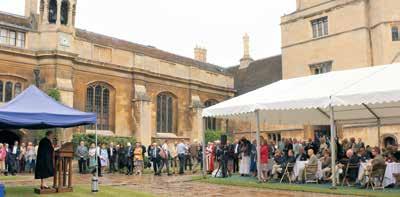
After 20 years, the structure of these groups has been updated to reflect changed circumstances. From July 1, 2022, these changes came to effect. The new eligibility criteria for entry into each group are listed below, as well as the benefits accompanying each level.
THE JOHN CAIUS GUILD
£2 million in pledges and donations
The names of John Caius Guild members are engraved on the Benefactors’ Wall in the Great Gate, where the College’s greatest benefactors since its foundation are celebrated.
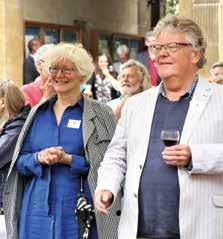
GONVILLE FELLOW BENEFACTORS
£1 million in pledges and donations
The Master and Fellows elect Gonville Fellow Benefactors with formal admission in Chapel during the service that precedes the Commemoration Feast. They are welcome to lunch and dine in College with a guest, and to stay the night whenever College is open. They are invited to all College Feasts and Fellows’ Guest Nights.
FOUNDERS OF THE COURT OF BENEFACTORS
£250,000 in pledges and donations
Founders of the Court of Benefactors are entitled to wear the fine gown traditionally worn by the College’s aristocratic Fellow Benefactors.
PATRONS OF THE COURT OF BENEFACTORS*
£100,000 in pledges and donations
Patrons will be invited to an exclusive annual event, hosted by the Master and other senior College Fellows.
MEMBERS OF THE COURT OF BENEFACTORS
£30,000 in pledges and donations
Members of the Court of Benefactors are invited to the College to take part in the service for the Commemoration of Benefactors and to dine with the Master and Fellows at the Commemoration Feast. All Members enjoy the privileges of Associate Members.
ASSOCIATE MEMBERS OF THE COURT OF BENEFACTORS
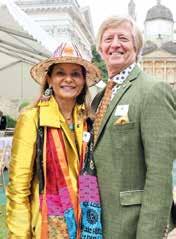
£12,500 in pledges and donations
Associate Members of the Court of Benefactors are given an exclusive option to book the Caius Box in the centre of the Grand Tier at the Royal Albert Hall. They are also invited to the annual College May Week Party.
We are enormously grateful to all of our donors who generously support the College at any level. All of our donors, regardless of amount, are entitled to use the College punt during the summer months. As many donors as we can accommodate who have made a gift during the past year are also invited to the College May Week Party.
We are enormously grateful to all of our donors who generously support the College at any level.
The Tammy Chen Postgraduate Studentship is transforming the lives of postgraduates at Caius.
One of the first recipients of the Tammy Chen Postgraduate Studentship says she would have probably quit the University of Cambridge, had it not been for the support she obtained from Caius.
Tiéphaine Thomason (History 2017) says the help she received during her undergraduate study was “pretty amazing” – and getting the funding to study for an MPhil in History was “an absolute godsend”.
Tiéphaine says: “I’d had a bit of an odd second year, and applied with my grades from then. I ended up getting a starred first in my third year, topping the College for History. Getting funding meant that I could do the MPhil work and that my grades from third year were acknowledged.”
The Tammy Chen Postgraduate Studentship provides financial support to postgraduate students studying Humanities subjects at Caius. It was established in memory of Tammy Chen, a PhD candidate at Caius killed in a terrorist attack in Burkina Faso in August 2017.
Tiéphaine says she felt humbled to receive funding from such tragic circumstances. Had the bursary not come through, she would have had to defer her studies.
Tiéphaine ended up getting the jointhighest grade in her cohort, and was jointly awarded the Members’ History Prize for the best MPhil dissertation submitted in 20/21. She largely credits the support she received from her Directors of Studies, Professor Peter Mandler and Dr Melissa Calaresu.

She says: “The College has been so supportive in every single way. I would not have made it through Cambridge at all, had it not been for Caius.”
One of her most surreal memories of College was during the first Covid-19 pandemic lockdown in 2020, towards the end of her third year and going into her MPhil year.
Tiéphaine says: “The whole University was in the ‘red phase’, which meant that everyone had gone home, apart from a select group of us, who couldn’t go home.”
She adds that being cut off from their families was a “very odd” experience, and thanks Senior Tutor Dr Andrew Spencer for his support during this strange period.
“My dad lives in Hong Kong. You couldn’t fly back to Hong Kong during that time. The same with a few friends of mine. We were all revising for exams, so that’s quite intense. Town was absolutely silent during this period. It was a very eerie feeling but it was also very exciting because you were left in an empty Cambridge to your own devices.”
Tammy Chen fund a “godsend”
Growing up in Hong Kong, Singapore and Zurich, Tiéphaine, who is half French, says she was “sent to the UK to straighten out my English” at the age of 13. Becoming a boarder at Oakham School in Rutland, one of England’s smallest counties, was a culture shock, so finding a multicultural community at Caius was a huge relief, she says.
She adds: “Caius itself is a wonderful environment, we’re one of the few colleges with very regular formals in the evenings, which means we go to them quite casually.”
She enjoyed helping out in the College archives and now volunteers through mentorship schemes such as Zero Gravity and Insight Outreach, encouraging other students to apply to university.
Tiéphaine has a final message to those who contributed towards her bursary, saying: “Thank you so much for all the support that you give to Caius and to students here. It makes a real impact and difference to our lives and on the future careers that we can have and hopefully we’ll be able to give something back at some point through the research that we do or what we end up producing.”
Outstanding postgraduate students like Tiéphaine continue to require funding especially in the Humanities and Social Sciences, for which financial support is increasingly difficult to access. The recent appointment of Dr Calaresu as the new Deputy Senior Tutor (Postgraduates) is indicative of the College directing focus on our postgraduate community and creating additional sources of funding to attract the best Masters and PhD students.
The College has been so supportive in every single way. I would not have made it through Cambridge at all, had it not been for Caius.
“
Saunders Research Fellowship Awarded
Professor John Saunders (Medical Sciences/ Pharmacology 1967) discusses his motivation for setting up the Saunders Research Fellowship, awarded this year to Dr Vedran Sulovsky.
TThe state-building ideology of western European monarchies and their coronation abbeys is the subject of research by Dr Vedran Sulovsky, the first recipient of the Saunders Research Fellowship.
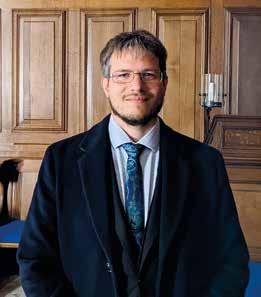
Vedran says it was “an honour and a privilege” to receive the Fellowship, established by Professor John Saunders (Medical Sciences/Pharmacology 1967), a top scientist based in Australia.
Vedran completed his BA in History and Art History at the University of Rijeka, Croatia, before going on to read an MA in Comparative Medieval History at the Central European University, Hungary, and a PhD in History at Sidney Sussex College.
His Research Fellowship focuses on the network surrounding Charlemagne’s church of Saint Mary in Aachen, Germany, and the relations it had with Westminster Abbey in England, the Abbey of Saint-Denis in France and the cathedral of Saint James in Santiago de Compostela in Spain.
After graduating, John worked in London and Birmingham, specialising in internal and addiction medicine, before taking up a consultancy in Maudsley Hospital, London, in 1983.
“
The following year, John relocated to Australia, working at the Universities of Queensland and Sydney.
A member of the World Health Organisation’s Expert Advisory Panel on Substance Abuse, John developed the Alcohol Use Disorders Identification Test (AUDIT), the world’s most widely used alcohol screening instrument, as well as being listed on the International Scientific Information’s (ISI) Highly Cited Scientist list.
While John’s career as a clinician, service director, researcher, and academic spans over four decades, he has retained a lively interest in other disciplines, recognising the importance of early research opportunities for young academics.
When it came to considering how best to “give back” to the place that “opened the door to the world”, the Saunders Research Fellowship Fund was born.
In his typically enlightened way, John is particularly keen that the fund supported humanities and sciences, encouraging collaborative work without borders. The College Council was delighted to be able to appoint Vedran as the first Saunders Research Fellow this year.
DIRECTOR OF DEVELOPMENT, MAŠA AMATT, IN CONVERSATION WITH
JOHN SAUNDERSMA: Can you tell me something about your background before you came up to Caius?
JS: I was brought up in Wrexham, North Wales, an unremarkable town surrounded by coal mines, steel works and other heavy industry, but it had two really good grammar schools. Every year about 40 boys proceeded to university and a further 40–60 to technical colleges. Between one and four boys each year would be accepted for Oxford or Cambridge, and I was one of them, coming up to Caius in 1967. Sadly, these two schools were closed after I left Wrexham to be replaced by a comprehensive school system and a sixth form college. I won’t get into the politics of this, but it seemed unfortunate that two well-functioning grammar schools were closed down, and for me it meant that my links at an institutional level with my hometown were broken.
In his typically enlightened way, John is particularly keen that the fund supported humanities and sciences, encouraging collaborative work without borders.
MA: You describe your time at Caius as providing you with a “window to the world”. Why?
JS: It expanded my horizons hugely. Both in Caius and in Cambridge as a whole I came across people of my age who were hugely talented. I also met undergraduates from very different walks of life and other countries. I recognised that both being at Cambridge and reading medical sciences/medicine would give me opportunities to engage in the world that otherwise I may not have had. In my third year I became a member of the Cambridge Rift Valley Expedition and in the vacation after the Part II exams I spent three months undertaking scientific research in East Africa with some close friends, largely from Caius.
MA: Setting up a Research Fellowship endowment fund requires significant capital. What motivated you to establish this fund?
JS: I thought Caius had looked after me well when I was an undergraduate. I thought the supervision system helped me digest essential knowledge more than I would have been able to do otherwise. I also appreciated the atmosphere of the College, the evening dinners, and the way it fostered friendships. Most of my closest friends were fellow undergraduates at Caius. I wanted to give something back and from the age of 50 I started making donations to the College, initially rather small amounts, and then I had the idea of making more substantial contributions. I discussed this with Anne Lyon, then Director of Development and Fellow of Caius. She indicated the funds that would be required to endow a Research Fellowship or scholarship and it was through these discussions that the idea of endowing the Saunders Research Fellowship was born.
MA: How did you go about making these donations to the College?
JS: At the time I made the decision to establish an endowment fund I had developed quite a lucrative consulting practice. For the first time in my life I had the possibility of making a substantial regular donation. Anne Lyon advised on an arrangement whereby I would contribute funds each year over a 10-year+ period and from 2010 I began to make annual donations of £100,000. I made the last donation in early 2022 and with the investment income that the fund had generated over this time (through wise decision making by the College financial officers) the requisite amount was achieved. The aim of course was to establish a Research Fellowship in perpetuity and ensure that the capital base would be preserved.
MA: Why were you keen that the Fellowship would be open to scientists and scholars from humanities?
I am well aware of the benefits of the particular approach to tuition at Cambridge and also the importance of Research Fellowships which provide guaranteed funding for up to four years.
JS: Having undertaken Part II in Pharmacology and through my subsequent career, I have of course a natural affinity for life sciences. I suggested some areas of scientific endeavour that I would be pleased for the Fellowship to support. Another strong view I hold is the importance of civilisation. I don’t want to sound too precious about this, but it seems that the hallmark of a civilised society is that it values its history, culture and creative works. I was therefore keen that the Fellowship should be available to those undertaking research in history, ancient and modern languages, and some of the other humanities. I was therefore particularly pleased that Dr Vedran Sulovsky, who has been appointed to the first Saunders Research Fellowship, is a historian, who specialises in the medieval world but also works on how subsequent generations have interpreted that world from perspectives that have evolved over the years.
MA: Given your experience, can you suggest how the College can increase its endowment?
JS: It seems to me that the way I ‘drip-fed’ funds over an extended period is a model of donation that other Caians (or external donors) might consider. For me it provided a discipline for saving and donating. The annual transfer meant that I couldn’t fritter the money away, and the benefits of sensible investing and compound interest would help the fund grow over the years. There was no tax relief for me in making these donations as unfortunately Australia does not recognise organisations in other countries for charitable purposes. However, those based in the UK and other countries where external donations obtain tax relief (e.g. the US) might be able to establish such a fund easily and in a tax effective way. I am well aware of the benefits of the particular approach to tuition at Cambridge and also the importance of Research Fellowships which provide guaranteed funding for up to four years. I hope therefore that other Caians might consider this approach for donation as a possibility for them.
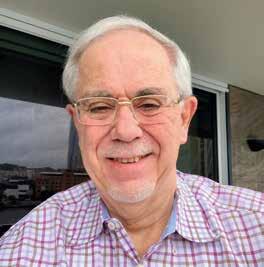
Accommodation at Caius


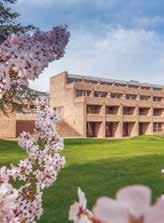
Located on our West Road site just a ten-minute walk from Old Courts and Cambridge city centre, all the rooms include free WiFi, tea and coffee-making facilities and toiletries with a full English and continental buffet breakfast included.
Gonville & Caius offers 175 en suite bedrooms between the Stephen Hawking and Harvey Court Buildings with a mix of singles, doubles, twins and triples, as well as five purpose-designed accessible rooms. There is an extensive area of beautifully landscaped gardens and furnished patios, which make a delightful addition to your stay.
• Check-in is from 2pm and check-out is by 10am. Secure luggage storage outside of these times is available via the West Road Porters’ Lodge.
• Breakfast is served from 7.30am to 9.30am Monday to Friday and from 7.30am to 10am on weekends.
• Parking should be pre-booked via the Meetings & Events Office as availability is limited due to our city centre location. This is charged at £16.50 per night.
• West Road Porters’ Lodge is staffed 24 hours a day, 7 days a week.
• Laundry facilities and bike storage also available.
Please note: Availability is limited to University Easter, Summer and Christmas vacation periods.
stay in Fellows’ guest rooms. For more information, and to book a guest room, please contact the Development Office. development@cai.cam.ac.uk+44 (0)1223 339676
EVENTS AND REUNIONS FOR 2022/23
SUN 17 SEPTEMBER Family Day
SAT 23 SEPTEMBER
Annual Gathering (all years up to and including 1971)
FAMILY DAY
For the first time, a Family Fun Day is being planned so that alumni can reconnect with Caius together with their children. The fun-filled event will take place during the daytime at Harvey Court on SUNDAY 17 SEPTEMBER 2023 . More details will be sent out nearer the time.
Lifelong connections, lasting legacies
After providing for family and friends, leaving a gift to Gonville & Caius in your will is an effective and enduring way of supporting future generations of Caians. The College is grateful for every bequest it receives. Here, we share the story of two of our benefactors and the impact of their generosity.
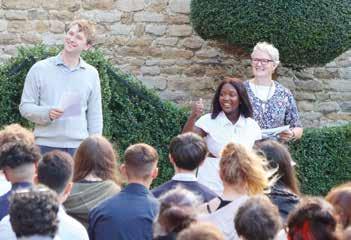
Kenneth (Modern & Medieval Languages 1946) and Kathleen Gale’s remarkable generosity has been helping Caius students for over two decades. Thanks to an exceptional bequest received from Kathleen in 2021, the College has further expanded bursarial support and enhanced its outreach programme.
Hailing from Sheffield, Kenneth came to the College with a Major Entrance Scholarship. At Caius, he studied French and German. He also served as team manager and second XI captain for Gonville & Caius Association Football Club.
Kenneth went on to pursue his own career in academia as a lecturer. He returned to his home town of Sheffield, where he and Kathleen lived happily for many years. Kenneth visited College frequently, often with Kathleen, for Annual Gatherings, the May Week Party and the Commemoration Feast. Always supportive of the College, Kenneth and Kathleen established a bursary fund in 2002 to provide invaluable help to undergraduates in need of financial assistance. In the years that followed, the Gales made other generous donations for student support and the Stephen Hawking Building appeal.
Kenneth died in 2017 at the age of 88. He chose to leave a bequest to the College, furthering his already generous support and continuing his legacy of helping current students. Kathleen died in 2020 and left a very generous gift to Caius in her will. It enabled the College to establish a second bursary fund in the Gales’ name and to expand its widening participation programme.
PICTURED ABOVE The Master and Tutor for Admissions and Outreach welcoming pupils from Norfolk on their visit to College
“I liked how one-to-one the teaching is. Conversations go back and forth and can go pretty off-topic but still be related at the same time. I would recommend the Scheme to anyone. It’s a very illuminating experience.”
Kade, Norfolk Higher Aspirations Scheme participant
The Cambridge Higher Aspirations Scheme was established by the College in partnership with Norfolk County Council, funded by Kathleen Gale’s bequest. The Scheme provides pupils from state schools in Norfolk, with whom Caius works as part of its Access & Outreach programme, with the opportunity to participate in a sustained programme of subject-specific supervisions, and to receive information and guidance from College staff and current students. The Scheme is already proving to be successful, both in terms of raising aspirations, encouraging applications to Cambridge and welcoming participants to Caius as new undergraduates.
Like Kenneth and Kathleen Gale, you could change the lives of future generations of Caians with a gift in your will. To find out more, visit www.cai.cam.ac.uk/legacies or contact the Development & Alumni Relations Office: development@cai.cam.ac.uk or +44 (0)1223 339676.
...Always a Caian
